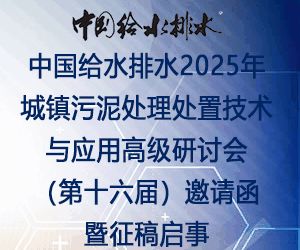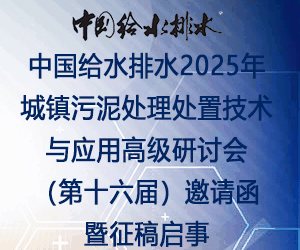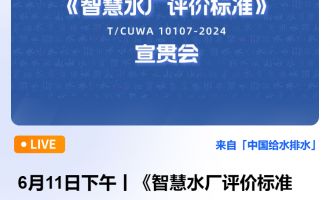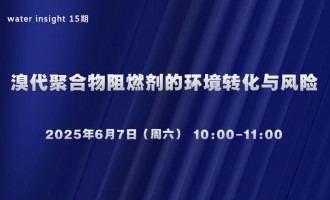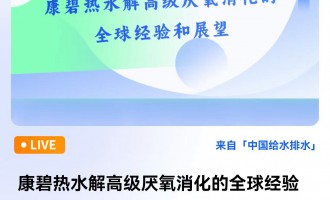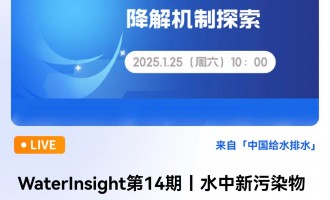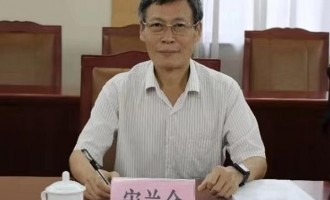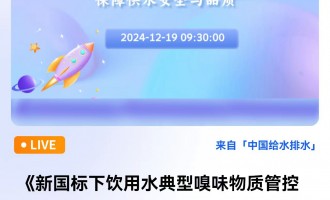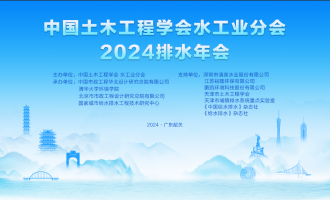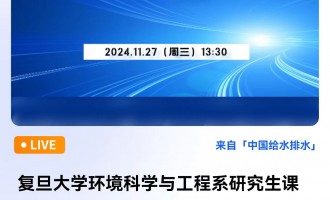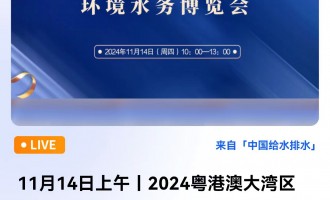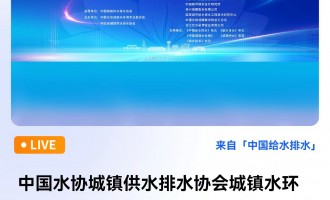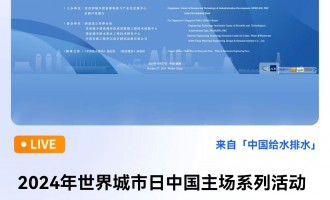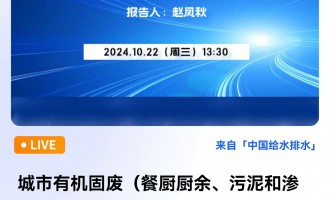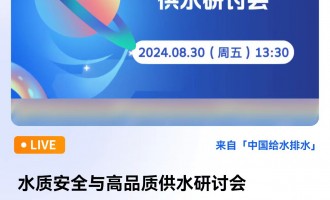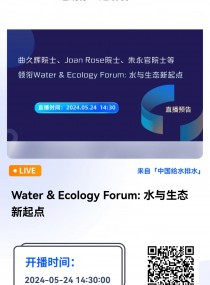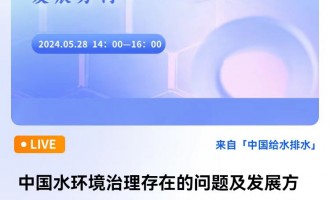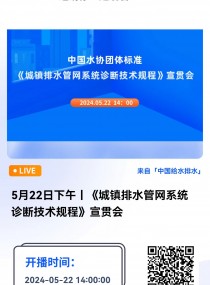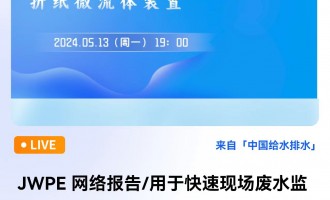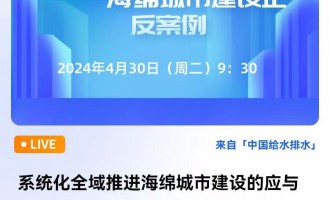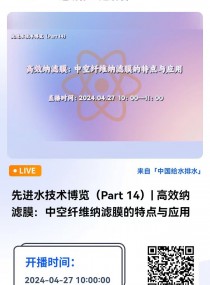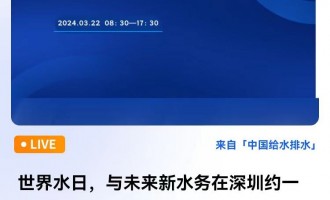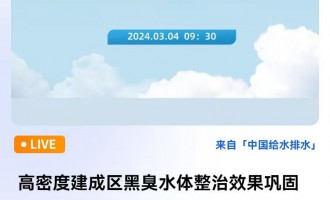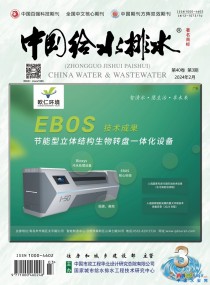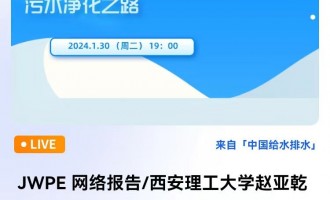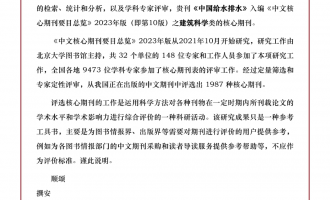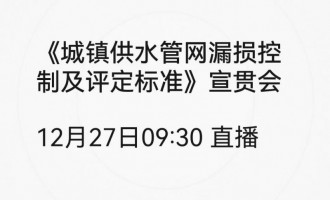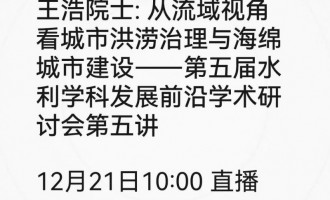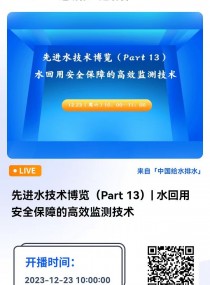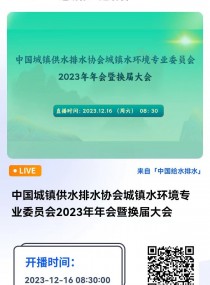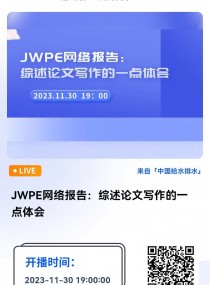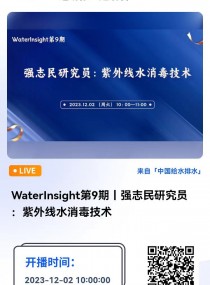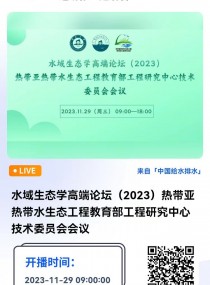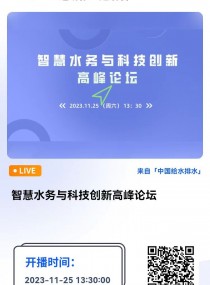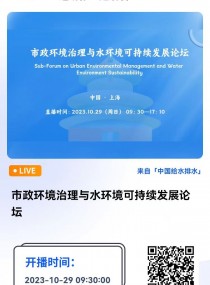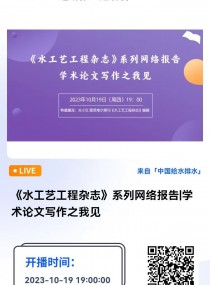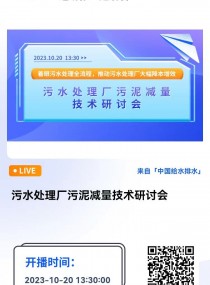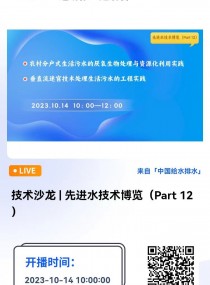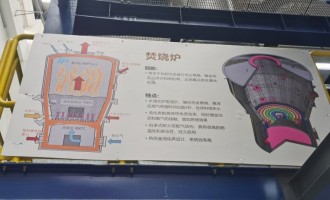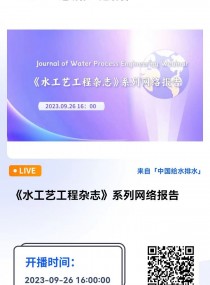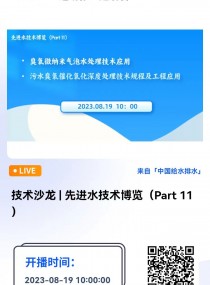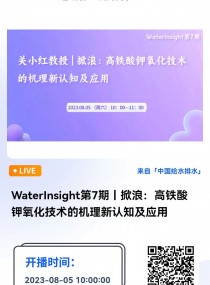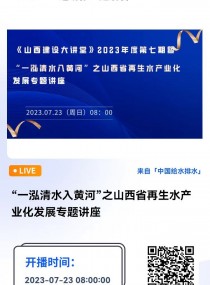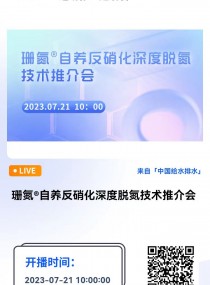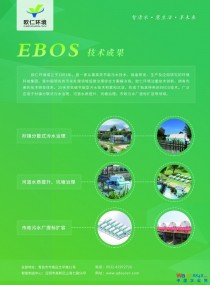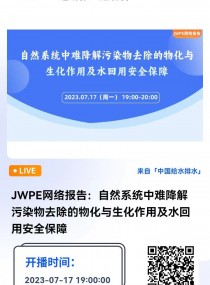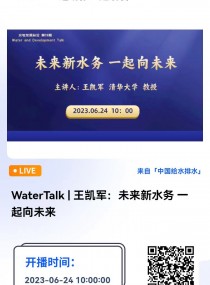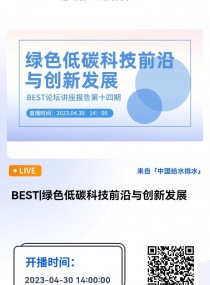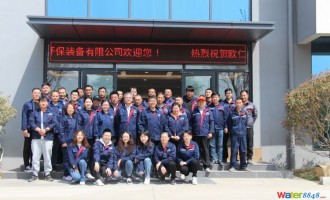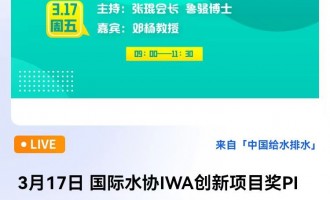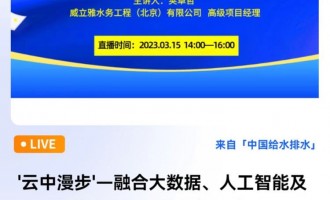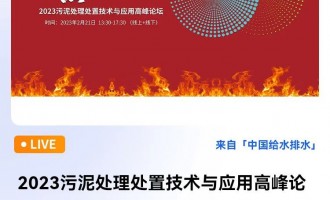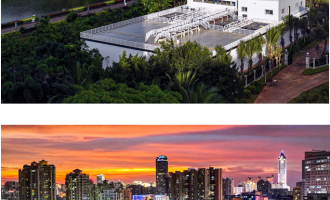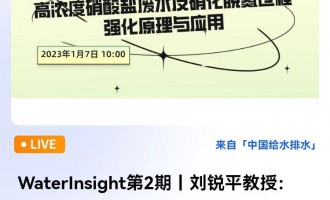PE/85/2024/REV/1
OJ L, 2024/3019, 12.12.2024, ELI: http://data.europa.eu/eli/dir/2024/3019/oj (BG, ES, CS, DA, DE, ET, EL, EN, FR, GA, HR, IT, LV, LT, HU, MT, NL, PL, PT, RO, SK, SL, FI, SV)
 In force: This act has been changed. Current consolidated version: 12/12/2024
In force: This act has been changed. Current consolidated version: 12/12/2024
 |
Official Journal |
EN L series |
|
2024/3019 |
12.12.2024 |
DIRECTIVE (EU) 2024/3019 OF THE EUROPEAN PARLIAMENT AND OF THE COUNCIL
of 27 November 2024
concerning urban wastewater treatment
(recast)
(Text with EEA relevance)
THE EUROPEAN PARLIAMENT AND THE COUNCIL OF THE EUROPEAN UNION,
Having regard to the Treaty on the Functioning of the European Union, and in particular Article 192(1) thereof,
Having regard to the proposal from the European Commission,
After transmission of the draft legislative act to the national parliaments,
Having regard to the opinion of the European Economic and Social Committee (1),
Having regard to the opinion of the Committee of the Regions (2),
Acting in accordance with the ordinary legislative procedure (3),
Whereas:
|
(1) |
Council Directive 91/271/EEC (4) has been substantially amended several times (5). Since further amendments are to be made, that Directive should be recast in the interests of clarity. |
|
(2) |
Water is a primary good which belongs to everyone and is for everyone. As a natural resource which is essential, irreplaceable and indispensable to life, it needs to be considered and integrated in its three dimensions: social, economic and environmental. |
|
(3) |
Directive 91/271/EEC sets the legal framework for the collection, treatment and discharge of urban wastewater and the discharge of biodegradable wastewater from certain industrial sectors. Urban wastewater can be formed by different mixtures of domestic wastewater, urban runoff and non-domestic wastewater from other origins. Wastewater from institutions such as offices, schools, kitchens with food preparation which originates predominantly from the human metabolism qualifies as domestic wastewater. The objective of Directive 91/271/EEC is to protect the environment from being adversely affected by insufficiently treated urban wastewater discharges. It has contributed to achieving the objectives established under Directive 2000/60/EC of the European Parliament and of the Council (6) and other relevant Union law. This Directive should continue to pursue the same objective while also contributing to the protection of public health in accordance with the One Health approach, which is aimed at sustainably balancing and optimising the health of people, animals and ecosystems, when for instance urban wastewater is discharged into bathing waters or into water bodies used for the abstraction of drinking water, or when urban wastewater is used as an indicator for parameters relevant for public health. It should also ensure access to sanitation and to key information related to the governance of urban wastewater collection and treatment activities. This Directive should also aim at increasing synergies with climate change adaptation and actions to restore urban ecosystems in particular through integrated urban wastewater management planning, while making optimal use of digitalisation. Finally, this Directive should contribute to the progressive reduction of greenhouse gas (GHG) emissions from urban wastewater collection and treatment activities, in particular by further reducing nitrogen emissions but also by promoting energy efficiency and production of renewable energies, and thus should contribute to the 2050 objective of Climate Neutrality established under Regulation (EU) 2021/1119 of the European Parliament and of the Council (7). In line with Article 193 of Treaty on the Functioning of the European Union (TFEU), Member States can go beyond the minimum requirements set out in this Directive. Member States could consider for instance applying deadlines or thresholds more stringent than those included in this Directive, reaching energy or climate neutrality more rapidly or imposing additional requirements for, or broadening the spectrum of the application of, their national extended producer responsibility systems. |
|
(4) |
In 2019, the Commission performed an evaluation of Directive 91/271/EEC under the Regulatory Fitness and Performance Programme (the ‘evaluation’). It became apparent from that exercise that certain provisions of that Directive needed to be updated. Three important sources of pollution not fully addressed under that Directive from urban wastewater that could be avoided were identified, namely storm water overflows and polluted discharges of urban runoff, potentially malfunctioning individual systems, that is to say systems treating domestic wastewater that does not enter collecting systems, and small agglomerations that are currently not completely covered by Directive 91/271/EEC. Those three sources of pollution put significant pressure on surface water bodies in the Union. Moreover, the report of the evaluation also highlighted the need to improve the transparency and governance of urban wastewater activities, to seize the opportunity offered by the urban wastewater treatment sector to use its potential for renewable energy development and make tangible steps towards energy neutrality as a contribution to climate neutrality, and to harmonise urban wastewater surveillance of health parameters, such as the COVID-19 virus and its variants, as a means of supporting public health action. |
|
(5) |
According to the 2018 report from the European Environment Agency (EEA) on European waters, small agglomerations put significant pressure on 11 % of the surface water bodies in the Union. To better tackle the pollution from such agglomerations, and to prevent discharges of untreated urban wastewater into the environment, the scope of this Directive should include all agglomerations of 1 000 population equivalent (p.e.) and above. |
|
(6) |
In order to ensure the effective treatment of urban wastewater before discharge into the environment, all urban wastewater from agglomerations of 1 000 p.e. and above should be collected in collecting systems, unless Member States justify the need for a derogation for the use of individual systems under this Directive. When delineating their agglomerations, Member States should take into account the indicative reference threshold of 10 to 25 p.e. per hectare, above which the population, possibly combined with economic activities, located in a specific area is considered sufficiently concentrated. Where collecting systems are already in place, Member States should ensure that all sources of domestic wastewater are connected to them. |
|
(7) |
Significant investments will be necessary to implement the new requirements introduced by this Directive. It is therefore necessary to take into account the specific situation of each Member State and, where appropriate, adapt the deadlines for the implementation of certain demanding requirements. For instance, Member States having a large number of small agglomerations concerned by the new requirements of this Directive in terms of collection and treatment of urban wastewater for agglomerations of between 1 000 and 2 000 p.e., should be allowed to extend the deadlines for compliance with those new requirements in their first national implementation programme. This should also be the case for Member States having a large number of facilities, for example above 50 %, that need to be upgraded to tertiary treatment in line with the new requirements of this Directive. Agglomerations of below 2 000 p.e. where collecting systems are already in place and discharging urban wastewater into treatment plants located in a different agglomeration should not be counted in the calculation of percentages for the purposes of the derogations from those deadlines. Moreover, the three Member States that acceded to the Union most recently, namely Bulgaria, Croatia and Romania, had to make recent investments to implement the requirements of Directive 91/271/EEC. Furthermore, those Member States are characterised by high amounts of rural areas with a high outflux of population, in addition to an ageing rural population. It is therefore necessary to take into account the specific situation of those Member States by allowing them to extend the deadlines for compliance with those new requirements in their first national implementation programme. |
|
(8) |
Where archaeologically valuable sites are encountered during infrastructural works, such as the building of collecting systems or urban wastewater treatment plants, such works are often delayed due to the need to perform archaeological studies on the site in accordance with national law. It is therefore appropriate to adapt the implementation deadlines in those specific cases. More specifically, where a Member State establishes that, due to the necessity to preserve cultural heritage, the construction of the required infrastructure is particularly difficult, it should be allowed to adapt the implementation deadlines in specific areas, and update accordingly its national implementation programme. The extensions of the deadlines should be set for each area and kept as short as possible, not exceeding 8 years. Cultural heritage should be understood within the meaning of Article 1 of the 1972 UNESCO World Heritage Convention. |
|
(9) |
Where it can be demonstrated that the establishment of an urban wastewater collecting system or the connection to a collecting system would produce no benefit for the environment or human health, would not be technically feasible or would involve excessive costs, and only in those cases, Member States should be allowed to use individual systems to collect, store and/or treat urban wastewater, provided that they ensure the same level of protection of the environment and human health as secondary and tertiary treatment. Individual systems can include different types of collection, storage or treatment system, such as nature-based solutions, small-sized treatment systems, or temporary tanks combined with regular evacuation to treatment plants. Member States should also exchange best practices on the use and operation of individual systems. |
|
(10) |
Member States should establish national, regional or local registers to identify individual systems and temporary storage used on their territory and take all measures necessary to ensure that the design of such systems is adequate, that the systems are properly maintained and that they are subject to a regular compliance control on the basis of a risk-based approach. In particular, Member States should ensure that individual systems used for the collection, storage or treatment of urban wastewater are impervious and leak-proof, and that monitoring and inspection of the systems are carried out at regular and fixed intervals. Taking into account the disproportionate costs for adapting the design of such systems to the new design requirements, those new design requirements should not apply to systems established prior to the entry into force of this Directive. Where individual systems are used to collect and/or treat more than 2 % of the urban wastewater load at national level from agglomerations of 2 000 p.e. and above, Member States should provide the Commission with justifications for the use of individual systems instead of collecting systems, demonstrating compliance of those systems with established standards under this Directive and describing the measures taken to reduce the use of such systems. |
|
(11) |
As a result of precipitation, such as rain, snow or meltwater, storm water overflows and urban runoff represent a sizeable remaining source of pollution discharged into the environment. Such overflows and runoff are expected to increase due to the combined effects of urbanisation and the progressive change of the rain regime linked with climate change. Urban wastewater management infrastructure is therefore particularly vulnerable to climate change. Solutions to reduce that source of pollution should be defined at local level, taking into account the specific local conditions. They should be based on an integrated quantitative and qualitative water management in urban areas. Therefore, Member States should ensure that integrated urban wastewater management plans are established at local level for all agglomerations of 100 000 p.e. and above as those agglomerations are responsible for a significant share of the pollution emitted. Furthermore, integrated urban wastewater management plans should also be put in place for agglomerations of between 10 000 p.e. and 100 000 p.e. where storm water overflows or urban runoff pose a risk for the environment or public health. In those plans, measures should be set out that aim at limiting the pollution from storm water overflows to no more than 2 % of the annual collected urban wastewater load calculated in dry weather flow conditions calculated on the basis of the pollutants in Tables 1 and 2 in Annex I. |
|
(12) |
Those plans should include measures to reduce the pollution from storm water overflows and also address the potentially significant pollution coming from separately collected urban runoff, for instance the pollution resulting from first rains after long dry periods in densely populated areas. Those plans should also include measures to prevent pollution at source and favour nature-based solutions over those that would require the establishment of grey infrastructure. Those measures could include preventive temporary measures aimed at avoiding the entry of unpolluted rain waters into collecting systems or temporary storage, including natural water retention, and appropriate treatment of heavily loaded runoff or overflows resulting from first rains. Member States are encouraged to increase green and blue spaces in urban areas and to take into account the Urban Nature platform, which provides guidance and knowledge to support towns and cities. In order to ensure adequate coverage of the integrated urban wastewater management plans and a comprehensive solution to storm water problems, those plans should be established for drainage areas of the agglomerations concerned. |
|
(13) |
In order to ensure that the integrated urban wastewater management plans are cost-effective, it is important that they be based on best practices that have already been applied in urban areas. Therefore, the measures to be considered should be based on a thorough analysis of the local conditions and should favour a preventive approach aimed at limiting the collection of unpolluted rain waters and optimising the use of existing infrastructure to generate energy savings and contribute to emission reduction. With a preference for green and blue developments and investments, new grey infrastructure should be envisaged only where absolutely necessary. |
|
(14) |
In order to protect the environment, in particular the coastal and marine environment, including the protection of surface, ground and drinking water, and public health from being adversely affected by the discharge of insufficiently treated urban wastewater, secondary treatment should be applied to all discharges of urban wastewater from agglomerations of 1 000 p.e. and above. Due to the expansion of the scope of this Directive to include smaller agglomerations, Member States should be given sufficient time to establish the required infrastructure to meet the obligations set out in this Directive. Similarly, enough time should be given to Member States to adapt their treatment infrastructure for agglomerations discharging their urban wastewater into coastal waters or less sensitive areas where secondary treatment was not required under Directive 91/271/EEC. |
|
(15) |
Discharges in high mountain regions, namely regions above an altitude of 1 500 m, and small agglomerations of below 2 000 p.e. in cold climate areas with a quarterly average temperature of below 6 oC in the inlet, in which it is difficult to apply an effective biological treatment because of low temperatures, should be allowed to use treatment less stringent than secondary treatment, provided that detailed studies demonstrate that such discharges do not have adverse effects on the environment or human health. Similarly, discharges into deep marine waters from smaller agglomerations of below 150 000 p.e. located in less-populated outermost regions, with fewer than 275 000 inhabitants characterised by difficult topography, such as steep slopes, and discharging their urban wastewater into deep marine waters in the open ocean, favouring a high level of dilution of those urban wastewater discharges into the receiving waters, should also be able to benefit from that derogation. Nevertheless, in order to ensure the equal treatment of all Member States and a high level of protection of the environment and human health on the whole territory of the Union, that derogation should be limited to 20 years, which is the time required to progressively upgrade the remaining urban wastewater treatment plants to secondary treatment in those areas where secondary treatment might be more difficult to apply. That derogation should be granted provided that detailed studies demonstrate that such discharges do not have adverse effects on the environment or human health and do not impact the compliance of the receiving waters with other relevant Union law, such as Directive 2000/60/EC, 2006/7/EC (8), or 2008/56/EC (9) of the European Parliament and of the Council. |
|
(16) |
The evaluation showed that significant reductions of nitrogen and phosphorus emissions were achieved through the implementation of Directive 91/271/EEC. Nevertheless, urban wastewater treatment plants remain, according to the evaluation, an important pathway of those pollutants into the environment, directly leading to eutrophication of water bodies and seas in the Union. Part of this pollution can be avoided as technical progress and best practices in place show that emission limit values established under Directive 91/271/EEC for nitrogen and phosphorus are outdated and should be strengthened, especially for larger treatment plants. Tertiary treatment should be systematically imposed on all urban wastewater treatment plants of 150 000 p.e. and above, as such plants represent an important remaining source of nitrogen and phosphorus discharge. |
|
(17) |
Tertiary treatment should also be mandatory in agglomerations of 10 000 p.e. and above that are discharging into areas subject to, or at risk of, eutrophication. In order to ensure that efforts to limit eutrophication are coordinated at the level of the relevant basins for the whole catchment zone, and to ensure the consistent designation of sensitive areas across the Union, areas where eutrophication is considered an issue according to currently available data should be listed in this Directive. Additionally, in order to ensure the coherence of relevant Union law, Member States should identify other areas subject to, or at risk of, eutrophication on their territory, and identify whether those areas are nitrogen- or phosphorus-sensitive, or both nitrogen- and phosphorus-sensitive in particular on the basis of data collected under Council Directive 91/676/EEC (10), Directive 2000/60/EC and Directive 2008/56/EC. The reinforcement of the limit values, the more coherent and inclusive identification of the areas sensitive to eutrophication and the obligation to ensure tertiary treatment for all large facilities would, in combination, contribute to limit eutrophication. Since this will require additional investment at national level, Member States should be given sufficient time to establish the required infrastructure. |
|
(18) |
根据委员会的四份通讯,即2018年1月16日的《欧洲循环经济中的塑料战略》,2019年3月11日的《欧洲环境中药品的战略方法》,2020年10月14日的《可持续化学战略——走向无毒环境》以及2021年5月12日的《为所有人健康星球之路——欧盟行动计划:“走向空气、水和土壤零污染”》,最近的科学知识表明,需要采取行动应对微污染物问题,这些微污染物现在在联盟的所有水域中都经常被检测到。一些微污染物即使在低浓度下,如每升微克以下,对公共健康和环境也是有害的。虽然初级、二级和三级处理已经去除了一些微污染物,但为了确保从城市污水中去除大部分剩余的微污染物,应引入额外的处理,即四级处理。四级处理应首先关注有机微污染物,这些微污染物是污染的重要部分,并且已经设计了去除技术。四级处理应基于预防原则,并结合基于风险的方法。因此,所有处理能力为150,000人当量及以上的城市污水处理厂都应提供四级处理。因为这些设施在环境中微污染物排放中占有重要比例,而且通过城市污水处理厂大规模去除微污染物在经济上是划算的。对于15万标人及以上的污水处理厂,成员国应确保优先进行必要的投资,以便对环境和人类健康风险最高的设施立即进行装备。对于1万人标人及以上的聚居区,成员国应要求在根据明确标准确定的对微污染物污染敏感的地区应用四次处理。这样的地区应包括向水体排放的城市污水处理后的水体稀释率低的位置。或接收水体被用于饮用水生产、贝类生产或作为浴场的情况。当风险评估显示不存在微污染物对环境或人类健康的潜在危险时,成员国应能够在这些地区不进行第四级处理。对于所有其他类型的城市人口达到10,000人当量及以上的水体,成员国应根据标准化的风险评估来评估微污染物排放对环境或公共健康的潜在风险,并仅在风险评估结果需要时进行第四级处理。当一个城市人口达到10,000人当量及以上并被识别为对微污染物污染敏感的有多座城市污水处理厂时,只有那些向有风险的地区排放的才应要求进行四重处理。为了给成员国足够的时间来规划和实施必要的基础设施,四重处理的要求应逐步实施,直到2045年,并有明确的中期目标。 |
|
输入:(19) |
为了确保城市废水处理厂的排放继续符合二级、三级和四级处理的要求,样品应按照本指令的要求进行采集,并且这些样品应符合其规定的技术参数值。为了考虑到这些样品结果可能存在的技术差异,应规定允许不符合这些技术参数值的样品的最大数量。 |
|
输入:(20) |
为了去除城市污水中的微污染物,需要进行四次处理,这将涉及额外的成本,例如与监测相关的成本以及在某些城市污水厂安装新先进设备的成本。为了覆盖这些额外成本,并根据《欧洲联盟条约》第191(2)条所表达的“污染者付费”原则,必须使在欧盟市场上销售的产品中包含的物质在使用寿命结束时成为城市污水中的微污染物的生产者,对在专业活动中产生的这些物质的额外处理负责。一个扩展生产者责任的系统是实现这一目标的最适当手段。这将限制对纳税人和水费的影响,同时为开发更环保的产品提供激励。在这种情况下,扩展的生产者责任应适用,无论产品是否投放市场,其各个组件是否在成员国或第三国制造,或者生产者是否在联盟内设有注册办事处,还是产品通过数字平台投放市场。目前,药物和化妆品残留物是城市废水中的主要微污染物来源,需要进行四次处理。因此,扩展的生产者责任应适用于这两个产品组。根据城市废水监测和最新的科学数据结果,委员会应定期评估是否应将其他产品纳入延伸生产者责任系统。 |
|
输入:(21) |
根据现有数据,由于实施扩展生产者责任,可能会导致产品成本的微小增加或市场上相关行业利润空间的微小缩减,这种影响在欧盟层面是边缘性的,并且不会危及这些产品在欧盟市场上的可负担性、可获得性或可接近性。然而,成员国应考虑扩展生产者责任要求在国家层面对产品可获得性、可获得性和可负担性可能产生的影响,特别是那些在欧盟市场上销售的药品,以及这些要求的实施可能对竞争公平性产生的影响。成员国可以采取行动确保有足够的资金。包括通过资助四次处理的一部分费用。鉴于成员国可能会选择不同的实施方法,应关注内部市场的运作,并在对本指令进行任何后续评估时,委员会应评估在这方面可能产生的任何影响。 |
|
输入:(22) |
然而,延长生产者责任义务的豁免应该是可能的。当一个生产者在其市场上投放的产品所含物质总量较少时,这种情况应该适用,即每年少于1吨,因为在这种情况下,对生产者的额外行政负担与环境利益相比是不成比例的。对于产品的一部分,如果生产者能够证明在产品使用寿命结束时不会产生微污染物,或者可以证明产品的残余物在废水和环境中能够快速生物降解,或者不会到达城市废水处理厂,也应有可能获得豁免。委员会应制定详细标准,以识别在使用寿命结束时不会在城市废水处理过程中产生微污染物的在欧盟市场上投放的产品,同时考虑其危险性和可生物降解性。在制定这些标准时,委员会应考虑欧洲议会和理事会第1272/2008号法规已设定的标准。 (11),但也可以包括科学或其他可用的技术信息,包括相关的国际标准。这些标准应在本指令规定的扩展生产者责任义务生效之前制定。 |
|
输入:(23) |
为避免可能的内部市场扭曲,本指令应规定实施延伸生产者责任制度的最低要求,而该制度的实际组织应由国家决定。为了促进替代产生城市废水微污染物残留物的物质和产品,生产者的贡献应与其在市场上投放的产品所含物质的数量以及这些物质及其残留物的危险性成比例。贡献应涵盖但不超过用于微污染物监测活动的投资和运营成本,收集,成员国市场上的产品数量和危害性统计数据的报告和公正验证,以及城市废水四次处理的高效应用。这些贡献还应包括在本指令生效时,已建立的四次处理的运行成本,以满足扩展的生产者责任系统义务。它还应包括已建立的四次处理的部分投资成本,考虑到投资的折旧和本指令规定的融资义务的截止日期。由于城市废水是集体处理的,引入一项要求,即生产商必须加入一个可以代表他们实施扩展生产者责任的集中组织是适当的。 |
|
输入:(24) |
评估还表明,城市废水处理部门有机会显著减少其自身的能源消耗,并产生可再生能源,例如通过更好地利用城市废水处理厂中的可用表面来生产太阳能,或者通过将污泥转化为沼气以及通过热能或动能或其他可再生能源来源来生产沼气。评估还说明,如果没有明确的法律义务,该部门只能取得部分进展。在此背景下,成员国应被要求确保其领土上所有处理10,000人当量负荷的城市废水处理厂的全年总能源使用量。并且不超过欧洲议会和理事会第 (EU) 2018/2001 号指令第 2(1) 条所定义的可再生能源生产的量。 (12)通过这些城市废水处理厂。为了考虑每个城市废水处理厂的特殊性,优化所需的投资,并提供实现能源中和目标所需的灵活性,同时确保可再生能源生产和节能潜力的充分利用,该目标应在国家层面实现,而不是每个处理厂都实现。城市废水处理厂运营商或其所有者产生的所有可再生能源,无论是在现场还是场外,如水力、太阳能、热能、风能或沼气,都应予以考虑。该目标应逐步实现,并在2045年12月31日前设定中期目标。可以购买一定数量的非化石能源。2040年和2045年,通过使用与条件相关的豁免,不直接与城市废水处理活动相关,来自外部来源的废水处理厂所有者或运营商应不包括购买的可再生能源。实现这一能源中和目标,特别是有助于减少城市废水处理部门的可避免的温室气体排放,同时支持实现2050年气候中和目标及相关国家和欧盟目标,如欧洲议会和理事会2018/842号条例中设定的目标。由城市污水处理厂的所有者或运营者产生或代表其产生的可再生能源不应包括购买的可再生能源。实现这一能源中和目标,将特别有助于减少城市污水处理部门的可避免的温室气体排放,同时支持实现2050年气候中和目标及相关国家和欧盟目标,例如欧洲议会和理事会2018/842号条例中设定的目标。由城市污水处理厂的所有者或运营者产生或代表其产生的可再生能源不应包括购买的可再生能源。实现这一能源中和目标,将特别有助于减少城市污水处理部门的可避免的温室气体排放,同时支持实现2050年气候中和目标及相关国家和欧盟目标,例如欧洲议会和理事会2018/842号条例中设定的目标。在支持实现2050年气候中和目标及相关国家和欧盟目标,如欧洲议会和理事会第2018/842号条例中规定的目标的同时,在支持实现2050年气候中和目标及相关国家和欧盟目标,如欧洲议会和理事会第2018/842号条例中设定的目标的同时, (13)。然而,实现能源中和的举措不应导致甲烷或一氧化二氮排放的增加。根据指令(EU)2018/2001,成员国应促进城市废水处理部门所需的可再生能源项目的许可程序。鼓励基于欧盟的沼气或太阳能生产,同时按照欧洲议会和理事会的能源效率原则(EU)2018/1999加强能源效率措施 (14) 并充分利用数字化,这意味着在制定能源政策和做出相关投资决策时,充分考虑成本效益最高的能源效率措施,这也有助于减少联盟的能源依赖,这是委员会于2022年5月18日发布的题为《REPower EU Plan》的通信中表达的一个目标。这也符合欧洲议会和理事会的指令 (EU) 2018/844 (15) 并且根据指令 (EU) 2018/2001,其中城市废水处理厂被确定为可再生能源的“首选”地区,这意味着被指定为特别适合安装可再生能源生产植物的地点。为了通过为每个城市废水处理厂和收集系统采取最佳措施来实现能源中和的目标,成员国应确保能源审计符合欧洲议会和理事会的指令 (EU) 2023/1791 的定义 (16)每四年进行一次审计。这些审计还应包括识别能源消耗潜力的降低,经济有效的废热回收和利用,无论是现场还是通过区域能源系统,或根据欧洲议会和理事会2012/27/EU指令附件六规定的经济有效的可再生能源的使用或生产 (17)。 |
|
输入:(25) |
由于甲烷排放减少对减缓气候变化的影响大于二氧化碳排放减少的 proportionate,且鉴于城市废水处理部门被确定为甲烷排放的主要排放部门之一,该部门应按照在格拉斯哥联合国气候变化大会(COP 26)上 launched 的全球甲烷承诺的指示,监测并努力减少甲烷排放 (18),类似于欧洲议会和理事会的欧洲议会和理事会的甲烷排放减少(欧盟)2024/1787(18),以确保城市废水处理部门在最迟2050年实现气候中和目标的贡献,正如《欧盟》2021/1119所规定的那样。 |
|
输入:(26) |
由于水污染具有跨境性,需要邻近的成员国或第三国在应对这种污染并确定措施以解决其来源方面进行合作,因此,如果一个成员国或第三国的城市废水排放引起的严重水污染影响或可能影响另一个成员国或第三国的水质量,成员国应相互通知或通知相关第三国。在发生显著影响下游水体的意外污染时,此类信息应立即提供,并且应在适当的时候进行回应。当成员国之间或与第三国之间已经就环境水问题达成先前协议时,通过这些协议进行的合作可以被考虑。委员会应了解此类污染,并在必要时根据成员国的要求参加相关会议。同样重要的是解决与一些成员国共享同一水体的第三国的跨界污染。为了应对来自或到达第三国的污染,可以与第三国在联合国欧洲经济委员会(UNECE)《关于保护和利用跨界河流和国际湖泊的公约》的框架内进行合作和协调。同样重要的是,解决与一些成员国共享同一水体的第三国的跨界污染。为了应对来自或到达第三国的污染,可以按照《联合国欧洲经济委员会关于保护和利用跨界河流和国际湖泊的公约》的框架,与第三国进行合作和协调。同样重要的是,解决与一些成员国共享同一水体的第三国的跨界污染。为了应对来自或到达第三国的污染,可以依据《联合国欧洲经济委员会关于保护和利用跨界河流和国际湖泊的公约》与第三国进行合作和协调。与第三国的合作与协调可以在联合国欧洲经济委员会(UNECE)《关于保护和利用跨界河流和国际湖泊的公约》的框架内进行与第三国的合作与协调可以在联合国欧洲经济委员会(UNECE)《关于保护和利用跨界河流和国际湖泊的公约》的框架内进行 (19) 或其他相关的区域公约,例如区域海洋或河流公约。 |
|
输入:(27) |
为了确保环境和人类健康的保护,成员国应确保按照本指令要求建设的收集系统和城市废水处理厂在所有正常的地方气候条件下都能确保足够的性能。由于城市废水基础设施已被欧盟议会和理事会的指令(EU)2022/2557确认为关键实体 (20),成员国还应确保在设计、建造和运营城市废水处理厂和收集系统时,评估其因气候变化而发生极端事件的脆弱性。 |
|
输入:(28) |
城市废水处理厂也接收非居民废水,包括工业废水,这些废水中可能含有指令91/271/EEC未明确涵盖的各种污染物,例如重金属、微塑料、微污染物和其他化学物质,包括全氟和多氟烷基物质(PFAS)。这种非居民废水可能来自工业、商业设施或医院和其他医疗机构。在大多数情况下,人们对这种污染缺乏了解和认识,这可能导致处理过程的恶化,加剧受纳水体的污染,同时阻止污泥的回收和处理后废水的再利用。成员国应定期监测和报告进入城市污水处理厂并排放到水体中的非住宅污染。为了防止连接到收集系统的工业或企业排放的非住宅废水污染,在源头上,应由主管当局或适当机构事先制定法规或具体许可,或两者兼有。为了确保收集系统和城市污水处理厂在技术上能够接收和处理来污染,应在颁发这些许可或采用这些事先法规之前,咨询和通知管理接收非住宅废水的城市污水处理厂的运营商,并应在需要时能够进行咨询。为使其能够调整其处理工艺,对所发出的许可进行审查。在来水中有非饮用水污染时,成员国应采取适当措施,通过加强收集系统中污染物的监测,减少污染源,必要时审查向相关、相连的城镇污水集中处理设施提供的许可。连接的城镇污水处理厂。连接的城镇污水处理厂。 |
|
输入:(29) |
联盟的水资源日益受到压力,导致联盟某些地区的水资源永久或暂时短缺。通过更广泛地重复利用处理过的城市废水,限制从地表和地下水体中提取淡水,可以提高联盟应对水资源压力增加的能力。因此,应鼓励并适用于所有适当用途在适当情况下重复利用处理过的城市废水,特别是在缺水地区,同时确保接收水体的最小生态流量,并考虑到满足《2000/60/EC指令》中规定的接收水体良好生态和化学状态目标的需要。为了实现这一目标,成员国在根据《2000/60/EC指令》进行影响评估时,应监测处理过的城市废水再利用对受纳水体最小生态流量的影响。在评估处理过的城市废水的再利用潜力时,应考虑到《2000/60/EC指令》下制定的河流 basin管理计划以及《欧洲议会和理事会2020/741号条例》第2(2)条中成员国的决定。在评估城市废水处理后重复使用潜力时,应考虑到根据《2000/60/EC指令》建立的河流 basin 管理计划以及欧洲议会和理事会《2020/741号条例》第2(2)条规定的成员国决定。在评估城市废水处理后重复使用潜力时,应考虑到根据《2000/60/EC指令》建立的河流 basin 管理计划以及欧洲议会和理事会《2020/741号条例》第2(2)条规定的成员国决定。 (21)以及确保符合《2000/60/EC指令》定义的接收体良好生态和化学状态目标的需要。加强城镇污水的处理要求,以及更好地监测、追踪和减少污染的行动,将对处理后的城镇污水质量产生影响,因此将支持污水的再利用。当污水的再利用用于农业灌溉时,应按照《(EU) 2020/741条例》进行。为确保处理后的城镇污水安全再利用,成员国应考虑对将被再利用或即将被再利用的城镇污水进行第四级处理。在成员国层面的水弹性战略中,当这些战略可用时,应考虑促进处理过的城市废水再利用的措施以及废水自身的再利用。 |
|
输入:(30) |
根据《(EU) 2020/741》法规,城市废水中的营养物质在城市废水经处理后可在农业中重复使用时是有益的。在这种情况下,成员国应能够在确保环境和人类健康最高保护水平的特定条件下,豁免本指令规定的三级处理义务,仅针对城市废水经处理后在农业中重复使用的部分。 |
|
输入:(31) |
为了确保本指令的正确实施,特别是尊重排放限值,对受处理的城市废水排放到环境中进行监测是重要的。监测应通过在国家层面建立强制性的事前法规或具体授权,或两者兼有,来实现,以便将受处理的城市废水排放到环境中。此外,为了防止使用生物介质的城市废水处理厂意外将生物介质排放到环境中,必须在排放授权或法规,或两者兼有,中包含具体的义务,以持续监测和防止这种排放。这些生物介质通常由塑料制成,可能包括但不限于生物载体、生物珠或聚苯乙烯珠。 |
|
输入:(32) |
在必要时,成员国应根据其人口规模及其所产生的生活污水量,调整其城市污水收集和处理基础设施,以继续符合本指令的要求。只要满足本指令规定的所有条件,成员国在建设及调整此类基础设施时,生活污水排放对水体可能产生的影响不应被视为违反《2000/60/EC指令》的义务。 |
|
输入:(33) |
为了确保环境的保护,应针对某些工业部门的可生物降解的非生活污水直接排放到环境中提出适当的的要求。这些要求应确保某些工业部门的直接排放根据环境保护和人类健康的需要,经过二级、三级和四级处理,并且在最终分析中,处理后的污水设定的参数得到遵守或确保相同的环境保护水平。 |
|
输入:(34) |
According to Article 168(1) TFEU, Union action complements national policies and is to be directed towards improving public health and preventing diseases. In order to ensure optimal use of relevant public health data from urban wastewater, urban wastewater surveillance should be set up and used for preventive or early warning purposes, for instance in the detection of specific viruses in urban wastewater as a signal of the emergence of epidemics or pandemics. Member States should establish a dialogue and coordination between competent authorities responsible for public health and competent authorities responsible for urban wastewater management. In the context of that coordination, roles, responsibilities and costs should be clearly allocated among those competent authorities. Member States should develop a list of parameters relevant for public health to be monitored in urban wastewater as well as the frequency and location of the sampling, taking into account the recommendations of, among others, the European Centre for Disease Prevention and Control (ECDC), of the Health Emergency Preparedness and Response Authority (HERA) and of the World Health Organization (WHO) and consider the following health parameters for inclusion in such a list: SARS-CoV-2 and its variants, poliovirus, influenza virus, emerging pathogens and any other public health parameters that may be considered relevant. On the basis of information gathered during the COVID-19 pandemic and experience gained from the implementation of Commission Recommendation (EU) 2021/472 (22), Member States should be required to monitor relevant health parameters in urban wastewater in the event of a health emergency. In order to ensure that harmonised methods are used, Member States should, to the extent possible, use the sampling and analysis methods set out in Recommendation (EU) 2021/472 for the monitoring of SARS-CoV-2 and its variants. |
|
(35) |
The Union recognises the importance of tackling the issue of antimicrobial resistance (AMR), in particular in the Communication from the Commission of 29 June 2017 entitled ‘A European One Health Action Plan against Antimicrobial Resistance (AMR)’, and adopted the European One Health Action Plan against AMR. According to the WHO, urban wastewater is recognised and documented as a major source of antimicrobial agents and their metabolites, as well as antimicrobial-resistant bacteria and their genes. In order to increase the knowledge on the main sources of AMR, a monitoring obligation for the presence of AMR in urban wastewater should be introduced to further develop our scientific knowledge and potentially take adequate action in the future. |
|
(36) |
This Directive acknowledges the ‘One Health’ approach, as recognised by the WHO, to be an integrated and unifying approach that aims to sustainably balance and optimise the health of people, animals and ecosystems. The ‘One Health’ approach recognises that the health of humans, domestic and wild animals, plants, and the wider environment, including ecosystems, are closely interlinked and interdependent. |
|
(37) |
In order to protect the environment and human health, Member States should identify and assess the risks caused by urban wastewater management. The risk assessment could include a broad chemical screening, including chemical mixtures, or biological effect-based methods, or both, in order to identify substances that cause concern for, inter alia, aquatic life or the quality of drinking or bathing water. On the basis of that identification, and where necessary to comply with the requirements of the Union water legislation, Member States should take measures for the collection and treatment of urban wastewater that are more stringent than the measures required to comply with the minimum requirements set out in this Directive. In line with Article 191(2) TFEU and in addition to the measures provided for or taken in accordance with Article 11(3) of Directive 2000/60/EC, Member States should promote, as a priority, the control of pollutants at source to prevent the pollution of receiving water bodies. In particular, Member States should take preventive measures to limit the risk that intentionally and unintentionally released microplastics reach urban wastewater and sludge. |
|
(38) |
Depending on the situation, those more stringent measures can include, inter alia, the establishment of collecting systems, the development of integrated urban wastewater management plans or the application of secondary, tertiary or quaternary treatment to urban wastewater for agglomerations or urban wastewater treatment plants that do not reach the p.e. thresholds triggering the application of the standard requirements. They can also include treatment that is more advanced than the treatment necessary to respect the minimum requirements or disinfection of treated urban wastewater necessary to comply with Directive 2006/7/EC. |
|
(39) |
Target 6.2 of UN Sustainable Development Goal 6 on clean water and sanitation requires Member States, by 2030, to achieve access to adequate and equitable sanitation and hygiene for all and end open defecation, paying special attention to the needs of women and girls and those in vulnerable situations. Sanitation facilities should allow the safe management and disposal of human urine, faeces and menstrual blood and the changing of menstrual products. Furthermore, Principle 20 of the European Pillar of Social Rights states that everyone has the right to access essential services of good quality, including water and sanitation. Against that background, and in accordance with the recommendations in the WHO Guidelines for Sanitation and Health (23) and the Protocol on Water and Health to the Convention on the Protection and Use of Transboundary Watercourses and International Lakes, done in London on 17 June 1999, Member States should tackle the issue of access to sanitation at national level. That should be done through actions ensuring access to sanitation for all, for example by setting up sanitation facilities in public spaces, as well as by encouraging the availability of appropriate sanitation facilities in public administrations and public buildings free of charge or making them affordable to all, including all kinds of facilities and services, such as flush and dry toilets. They should be safely managed, which means that they should be accessible to all, where appropriate, at all times, including for people with particular needs, such as children, older persons, persons with disabilities and homeless people, that they should be placed in a location that ensures maximum safety for users, and that they should be hygienically and technically safe to use. Such facilities should also be sufficient in number to ensure that the needs of people are met and waiting times are not unreasonably long. The sufficient number of sanitation facilities in public spaces should be decided at the appropriate level, taking into account the principle of subsidiarity. |
|
(40) |
The specific situation of minority cultures, such as Roma and Travellers, whether settled or not, and in particular their lack of access to sanitation, was acknowledged in the Communication from the Commission of 7 October 2020 entitled ‘A Union of Equality: EU Roma strategic framework for equality, inclusion and participation’, which calls for increasing effective equal access to essential services. Overall, it is appropriate that Member States pay particular attention to vulnerable groups or groups that are marginalised due to factors related to their socio-economic situation, ethnicity, sexuality, gender, disability, homelessness, legal status, religious conviction or other reasons by taking the measures necessary to ensure access to sanitation for those groups. It is important that the identification of those groups be consistent with Article 16(1) of Directive (EU) 2020/2184 of the European Parliament and of the Council (24). Measures to improve access to sanitation by vulnerable and marginalised groups might include providing sanitation facilities in public and private spaces for free or for a low service fee as well as in public administration buildings, improving or maintaining the connection to adequate systems to collect urban wastewater, and raising awareness of the nearest sanitation facilities. |
|
(41) |
According to the EU Human Rights Guidelines on Safe Drinking Water and Sanitation, adopted by the Council on 17 June 2019, particular attention has to be given to the needs of women and girls, as they are particularly at risk and exposed to attacks, sexual and gender-based violence, harassment and other threats to their safety when accessing sanitation facilities outside their homes. This is in line with the Council Conclusions on Water Diplomacy, adopted on 19 November 2018, which reaffirm the importance of integrating a gender perspective into water diplomacy. Therefore, Member States should pay particular attention to women and girls as being a vulnerable group and should take the measures necessary to improve or maintain safe access to sanitation for them. |
|
(42) |
The evaluation concluded that sludge management could be improved to better align it with the principles of the circular economy and of the waste hierarchy as defined in Article 4 of Directive 2008/98/EC of the European Parliament and of the Council (25). The actions to better monitor and reduce pollution at source from non-domestic discharges will contribute to improving the quality of the sludge produced and ensure its safe use in agriculture. In order to ensure the proper and safe recovery of nutrients, including the critical substance phosphorus, from sludge, a minimum combined reuse and recycling rate should be set at Union level. Member States should be able to choose whether to reuse or recycle, or both, urban wastewater or sludge, or both, in order to recover phosphorus. The combined minimum reuse and recycling rate should take into account the phosphorus content of sludge, which can vary from one area to another. It should also take into account the level of saturation of each national market, for example the availability of other sources of phosphorus from organic sources, for instance from livestock farming, and the possibilities of its absorption in agriculture. Member States should be encouraged to monitor micropollutants in sludge, particularly where there is a risk of accumulation of micropollutants in sludge, and when it is reused in agriculture in order to increase knowledge about its presence and to protect the environment and human health. The proper and safe recovery of nutrients and their reuse in agriculture should be encouraged in order to support the resilience and sustainability of the agricultural sector and contribute to the strategic autonomy of the Union fertiliser industry. In that context, Member States should, while taking into account national and local valorisation options, take measures to encourage the production and purchasing of recovered nutrients from urban wastewater and sludge. When reusing sludge in agriculture particular attention should be paid to microplastics. Microplastics should therefore be systematically monitored when sludge is reused in agriculture. This information is indispensable for the safe management of sludge in agriculture and any possible review of relevant Union policy. |
|
(43) |
Adequate monitoring is necessary to verify compliance with the new requirements of this Directive concerning micropollutants, non-domestic pollution, energy neutrality, storm water overflows and urban runoff. Monitoring should be supported, where technically feasible and appropriate, through the use of digital tools. In particular for the operational management of collecting systems and urban wastewater treatment plants, the use of digital tools should be systematically considered. To verify the compliance of the quaternary treatment concerning the reduction of micropollutants in urban wastewater discharges, it is sufficient to monitor a limited set of representative micropollutants. The monitoring frequencies should be built on the current best practices, as currently practised in Switzerland. To remain cost-effective, those obligations should be adapted to the size of the urban wastewater treatment plants and of the agglomerations. For the purposes of such monitoring, this Directive provides for sampling to be carried out. Each time sampling is carried out, a sample is taken both at the inlet and outlet of the urban wastewater treatment plant. The monitoring will also contribute to providing data for the overall Environmental Monitoring Framework as set up under the 8th Environmental Action Programme (26), and more specifically to feeding the Zero Pollution Monitoring and Outlook Framework underpinning it, set out in the Commission Communication of 12 May 2021 entitled ‘Pathway to a Healthy Planet for All EU Action Plan: “Towards Zero Pollution for Air, Water and Soil”’. |
|
(44) |
Microplastics and relevant micropollutants should be monitored, where relevant, in storm water overflow discharges and in discharges of urban runoff from separate systems with a representative sampling programme allowing for concentration estimation with a view to modelling water quality. GHG emissions should be monitored by means of analysis, calculations or modelling, where appropriate. |
|
(45) |
To ensure the protection of the environment and that adequate action is taken under any risk assessment to be carried out for the implementation of this Directive as well as for the implementation of other Union law, Member States should monitor a broad spectrum of pollutants at the inlets and outlets of the urban wastewater treatment plants. To avoid an unnecessary burden, only pollutants that can be expected to be found in urban wastewater should be monitored, taking into account the high variety of pollutants which could reach urban wastewater treatment plants, including from non-domestic wastewater sources. Member States should be able to reduce the monitoring frequency if pollutants are not found in subsequent sampling campaigns. More specifically, recent data shows that PFAS are found in urban wastewater, sometimes at high concentrations. The most recent scientific evidence shows that PFAS are a concern for the environment and for public health due to their persistence. It is therefore essential to better understand the pathways of PFAS into the environment and to monitor them in the inlet and outlet of the urban wastewater treatment plants. This monitoring should start in the first instance where the discharges reach catchment areas used for the abstraction of drinking water, due to the high risks of being exposed to PFAS and their impact on health. |
|
(46) |
In order to reduce the administrative burden and better use the possibilities offered by digitalisation, the reporting on the implementation of this Directive should be improved and simplified by removing the obligation for Member States to report every two years to the Commission and for the Commission to publish bi-yearly reports. It should be replaced by a requirement for Member States to improve, with the support of the EEA, the existing national standardised data sets established under Directive 91/271/EEC, and to regularly update them. The Commission will use those improved data sets to verify compliance with this Directive. It is appropriate for the reporting model to be developed by the EEA in collaboration with Member States. Access to the national databases should be provided to the Commission and the EEA. In order to ensure complete information on the application of this Directive, the data sets should include information on compliance of urban wastewater treatment plants with the treatment requirements (pass/fail, loads and concentration of pollutants discharged), on the level of achievement of the objectives of energy neutrality, on GHG emissions of the treatment plants above 10 000 p.e. and on measures taken by the Member States in the context of storm water overflows and urban runoff, access to sanitation and treatment by individual systems. Moreover, full consistency with Regulation (EC) No 166/2006 of the European Parliament and of the Council (27) should be ensured in order to optimise the use of the data, as well as to support full transparency. The information collected through those data sets should support a comparison of, and an exchange of best practices at Union level with regard to, the performance of urban wastewater treatment plants. The administrative burden of providing information and data to the public should at all times be such as to respect the principle of proportionality. |
|
(47) |
The implementation of Directive 91/271/EEC is financed through water tariffs and public budgets, including Union funding. In the future, the extended producer responsibility should be such as to ensure that the costs of the quaternary treatment are at least partially borne by the industries concerned and complemented by other types of financing. In the past, the implementation of Directive 91/271/EEC was also substantially supported by the Union’s Cohesion Policy and programmes under Horizon 2020 and LIFE. In order to ensure the timely and proper implementation of this Directive, it is essential that Member States establish a national implementation programme including long-term programming of the required investments accompanied by a financing strategy. Those national implementation programmes should be reported to the Commission. To limit the administrative burden, that requirement should not apply to Member States in which more than 95 % of the agglomerations are compliant with the main obligations to treat and collect wastewater. To continue the implementation of this Directive, the Commission should consider the national implementation programmes reported by Member States for the preparation of the next multiannual financial framework and those following thereafter and the Member States should put in place the required extended producer responsibility system without delay. |
|
(48) |
The urban wastewater collection and treatment sector is specific, operating as a captive market, with public and small enterprises being connected to the collecting system without being able to choose their operators. It is therefore important to ensure public access to operators’ key performance indicators, such as the level of treatment achieved, the costs of treatment, the energy used and produced, and the related GHG emissions and carbon footprint. In order to make the public more aware of the implications of urban wastewater treatment, key information on the annual wastewater collection and treatment costs for each household should be provided, at least in agglomerations above 10 000 p.e., and preferably above 1 000 p.e., in an easily accessible manner, for instance on the invoices, while other detailed information should be accessible in a user-friendly format online, on a website of the operator or the competent authority. |
|
(49) |
Directive 2003/4/EC of the European Parliament and of the Council (28) guarantees the right of access to environmental information in the Member States in line with the 1998 United Nations Economic Commission for Europe Convention on Access to Information, Public Participation in Decision-Making and Access to Justice in Environmental Matters (the ‘Aarhus Convention’) (29). The Aarhus Convention encompasses broad obligations related both to making environmental information available upon request and actively disseminating such information. It is important that the provisions of this Directive related to access to information and data-sharing arrangements complement that Directive, by establishing the obligation to make available to the public online information on the collection and treatment of urban wastewater in a user-friendly manner, without creating a separate legal regime. |
|
(50) |
The effectiveness of this Directive and its aim of protecting public health in the context of the Union’s environment policy require that natural or legal persons, or where appropriate their duly constituted organisations, be able to rely on it in legal proceedings and that the national courts be able to take this Directive into consideration as an element of Union law in order, inter alia, to review decisions of a national authority where appropriate. In addition, according to settled case law of the Court of Justice of the European Union, under the principle of sincere cooperation laid down in Article 4(3) of the Treaty on European Union (TEU), it is for the courts of the Member States to ensure judicial protection of a person’s rights under Union law. Furthermore, Article 19(1) TEU requires Member States to provide remedies sufficient to ensure effective legal protection in the fields covered by Union law. This should be done in accordance with national rules, without depriving the provision on compensation of its effectiveness. In addition, in accordance with the Aarhus Convention, members of the public concerned are to have access to justice in order to contribute to the protection of the right to live in an environment which is adequate for personal health and well-being. |
|
(51) |
To adapt this Directive to scientific and technical progress, the power to adopt acts in accordance with Article 290 TFEU should be delegated to the Commission in respect of amending certain parts of the Annexes with regard to the adaptation of monitoring to state-of-the-art methods for monitoring, including with a view to making optimal use of digital tools and taking into account the relevant methods used in other relevant Union law, and evaluation of results for the requirements for the tertiary and quaternary treatment, and the requirements for prior regulations and specific authorisations for discharges of non-domestic wastewater into collecting systems and urban wastewater treatment plants and in respect of supplementing this Directive by specifying a minimum combined reuse and recycling rate for phosphorus from sludge and from urban wastewater, taking into account available technologies and resources as well as the economic viability for phosphorus recovery and by updating the information provided to the public online and to households. It is of particular importance that the Commission carry out appropriate consultations during its preparatory work, including at expert level, and that those consultations be conducted in accordance with the principles laid down in the Interinstitutional Agreement of 13 April 2016 on Better Law-Making (30). In particular, to ensure equal participation in the preparation of delegated acts, the European Parliament and the Council receive all documents at the same time as Member States’ experts, and their experts systematically have access to meetings of Commission expert groups dealing with the preparation of delegated acts. |
|
(52) |
In order to ensure uniform conditions for the implementation of this Directive, implementing powers should be conferred on the Commission for the adoption of standards for the design of individual systems, for the establishment of the format of the reporting and the level of detail of the information in relation to individual systems, for establishing the format and the method of the risk assessment to be used in the context of the quaternary treatment, for the adoption of monitoring and assessment methods for the indicators of the quaternary treatment and the objectives regarding energy neutrality, for the establishment of common conditions and criteria for the application of the exemption for certain products from extended producer responsibility, for establishing methodologies for supporting the development of integrated urban wastewater management plans, for the development of alternative indicators to the load-based indicative objective of pollution reduction based for instance on volume, number of occurrences of storm water overflows, volume of the discharged urban runoff, or other relevant alternative indicators, and for establishing a minimum frequency of sampling and methodologies for measuring antimicrobial resistance, direct and indirect GHG emissions and microplastics in urban wastewater and sludge, for the establishment of a minimum list of relevant pollutants likely to be found in urban wastewater including a methodology for identifying relevant pollutants likely to be found in urban wastewater and criteria for revising the exclusion of some pollutants to be monitored, for the establishment of a harmonised methodology for measuring ‘Per- and Polyfluoroalkyl Substances (PFAS) Total’ and ‘Sum of PFAS’ in urban wastewater and for the adoption of the format of, and modalities for presenting, the information to be provided by Member States and compiled by the EEA on the implementation of this Directive. Those powers should be exercised in accordance with Regulation (EU) No 182/2011 of the European Parliament and of the Council (31). |
|
(53) |
Member States should lay down rules on penalties applicable to infringements of national provisions adopted pursuant to this Directive and should take all measures necessary to ensure that they are implemented. The penalties should be effective, proportionate and dissuasive, and should, as applicable, take into account the financial situation of the natural or legal person held responsible. |
|
(54) |
Pursuant to the Interinstitutional Agreement on Better Law-Making, the Commission should carry out an evaluation of this Directive within a certain period of time from the date set for its transposition. That evaluation should be based on experience gained and data collected during the implementation of this Directive, on any available WHO recommendations, and on relevant scientific, analytical, and epidemiological data. In the evaluation, particular attention should be given to an analysis of the adequacy of the public health parameters used in urban wastewater surveillance, an analysis of the added value of a mandatory monitoring of public health parameters, an analysis of the possible necessity to adapt the list of products to be covered by extended producer responsibility systems including the conditions for exemptions, an analysis of the possible impacts on the functioning of the internal market of the potentially different contribution rates for producers set by Member States, an analysis of the feasibility and appropriateness of the development of an extended producer responsibility system for products generating PFAS and microplastics, an analysis of the added value and the appropriateness of requiring mandatory national water reuse plans including national targets and measures, an evaluation of the objective of energy neutrality in order to analyse the technical and economic feasibility and environmental and climate benefits to achieve a higher level of energy autonomy in the sector, an evaluation of the possibilities for measuring direct and indirect GHG emissions emitted from the urban wastewater sector, an evaluation of the possibility of reaching climate neutrality for the urban wastewater treatment sector, and the time required to do so, as well as the feasibility and appropriateness of setting Union minimum reuse and recycling rates for nitrogen from sludge or from urban wastewater, or both. |
|
(55) |
Directive 91/271/EEC provides for specific deadlines for Mayotte due to its inclusion in 2014 as an outermost region within the meaning of Article 349 TFEU. Therefore, the application of the obligations to establish collecting systems and apply secondary treatment to urban wastewater from agglomerations of 2 000 p.e. and above should be deferred with respect to Mayotte. |
|
(56) |
It is appropriate to consider the specific situation of Mayotte and the Union’s other outermost regions, as listed in Article 349 TFEU, which provides for specific measures to support those regions. In terms of urban wastewater treatment of those territories, special attention should be given to the difficult topography and insularity of those territories. |
|
(57) |
In order to ensure the continuity of the protection of the environment, it is important that Member States maintain at least the current level of tertiary treatment until the new requirements for the reduction of phosphorus and nitrogen become applicable. Therefore, Article 5 of Directive 91/271/EEC should continue to apply until those new requirements become applicable. |
|
(58) |
Since the objectives of this Directive, namely to protect the environment and public health, to make progress in achieving climate neutrality for urban wastewater collection and treatment activities, to improve access to sanitation and to ensure the regular surveillance of parameters relevant to public health, cannot be sufficiently achieved by the Member States but can rather, by reason of the scale and effects of the action, be better achieved at Union level, the Union may adopt measures, in accordance with the principle of subsidiarity as set out in Article 5 TEU. In accordance with the principle of proportionality as set out in that Article, this Directive does not go beyond what is necessary in order to achieve those objectives. |
|
(59) |
The obligation to transpose this Directive into national law should be confined to those provisions which represent a substantive amendment as compared to Directive 91/271/EEC. The obligation to transpose the provisions which are unchanged arises under that Directive. |
|
(60) |
This Directive should be without prejudice to the obligations of the Member States relating to the time limits for the transposition into national law of the Directives set out in Part B of Annex VII, |
HAVE ADOPTED THIS DIRECTIVE:
Article 1
Subject matter
This Directive lays down rules on the collection, treatment and discharge of urban wastewater, to protect the environment and human health, in line with the One Health approach, while progressively reducing greenhouse gas (GHG) emissions to sustainable levels, improving the energy balance of urban wastewater collection and treatment activities and contributing to the transition towards a circular economy. It also lays down rules on access to sanitation for all, on transparency of the urban wastewater sector, on the regular surveillance of relevant public health parameters in urban wastewater and on the implementation of the polluter-pays principle.
Article 2
Definitions
For the purposes of this Directive, the following definitions apply:
|
(1) |
‘urban wastewater’ means any of the following:
|
|
(2) |
‘domestic wastewater’ means wastewater from residential settlements, services and institutions which originates predominantly from the human metabolism or from household activities, or from both; |
|
(3) |
‘non-domestic wastewater’ means wastewater, other than domestic wastewater and urban runoff, which is discharged from premises used for the exercise of a trade or industrial or economic activities; |
|
(4) |
‘agglomeration’ means an area where the population expressed in population equivalent, combined or not with economic activities, is sufficiently concentrated for urban wastewater to be collected and conducted to one or more urban wastewater treatment plants or to one or more final discharge points; |
|
(5) |
‘urban runoff’ means precipitation in agglomerations collected by combined or separate sewers; |
|
(6) |
‘storm water overflow’ means discharge of untreated urban wastewater into receiving waters from combined sewers caused by precipitation or system failures; |
|
(7) |
‘collecting system’ means a system of conduits which collects and conducts urban wastewater; |
|
(8) |
‘combined sewer’ means a single conduit that collects and conducts urban wastewater, including urban runoff; |
|
(9) |
‘separate sewer’ means a conduit that separately collects and conducts one of the following:
|
|
(10) |
‘1 population equivalent’ or ‘(1 p.e.)’ means the organic biodegradable load per day, having a five-day biochemical oxygen demand (BOD5) of 60 g of oxygen per day; |
|
(11) |
‘primary treatment’ means treatment of urban wastewater by a physical or chemical process, or both, involving settlement of suspended solids, or other processes in which the BOD5 of the incoming wastewater is reduced by at least 20 % before discharge and the total suspended solids of the incoming wastewater are reduced by at least 50 %; |
|
(12) |
‘secondary treatment’ means treatment of urban wastewater by a process generally involving biological treatment with a secondary settlement or another process which reduces biodegradable organic matter from urban wastewater; |
|
(13) |
‘tertiary treatment’ means treatment of urban wastewater by a process which reduces nitrogen or phosphorus, or both, in urban wastewater; |
|
(14) |
‘quaternary treatment’ means treatment of urban wastewater by a process which reduces a broad spectrum of micropollutants in urban wastewater; |
|
(15) |
‘sludge’ means organic and inorganic residue resulting from the treatment of urban wastewater from an urban wastewater treatment plant, excluding grit, grease, other debris and any other screenings and residues from the pre-treatment step; |
|
(16) |
‘eutrophication’ means the enrichment of water by nutrients, especially compounds of nitrogen or phosphorus, or both, causing an accelerated growth of algae and higher forms of plant life to produce an undesirable disturbance to the balance of organisms present in the water and to the quality of the water concerned; |
|
(17) |
‘micropollutant’ means a substance as defined in Article 3(1) of Regulation (EC) No 1907/2006 of the European Parliament and of the Council (32), including its breakdown products, that is usually present in the aquatic environment, urban wastewater or sludge and that can be considered hazardous to the environment or human health on the basis of the relevant criteria set out in Parts 3 and 4 of Annex I to Regulation (EC) No 1272/2008, even in low concentrations; |
|
(18) |
‘dilution ratio’ means the ratio of the average over the last five years of annual flow of the receiving waters at the point of discharge to the average over the last five years of the annual discharge volume of urban wastewater into surface waters; |
|
(19) |
‘producer’ means any manufacturer, importer or distributor that on a professional basis places products on the market of a Member State, including by means of distance contracts as defined in Article 2(7) of Directive 2011/83/EU of the European Parliament and of the Council (33); |
|
(20) |
‘producer responsibility organisation’ means a nationally recognised organisation established to enable producers to fulfil their obligations under Articles 9 and 10; |
|
(21) |
‘sanitation’ means facilities and services for the safe, hygienic, secure, and socially and culturally acceptable management and disposal of human urine and faeces, and for the changing and disposal of menstrual products, that provide privacy and ensure dignity; |
|
(22) |
‘antimicrobial resistance’ means the ability of micro-organisms to survive or to grow in the presence of a concentration of an antimicrobial agent which is usually sufficient to inhibit or kill micro-organisms of the same species; |
|
(23) |
‘One Health’ means One Health as defined in Article 3, point (7), of Regulation (EU) 2022/2371 of the European Parliament and of the Council (34); |
|
(24) |
‘public concerned’ means the public affected or likely to be affected by, or having an interest in, the taking of a decision for the implementation of the obligations laid down in Article 6, 7 or 8 of this Directive; for the purposes of this definition, non-governmental organisations promoting the protection of the environment or human health and meeting any requirements under national law are deemed to have an interest; |
|
(25) |
‘biomedia’ means any support, usually made of plastic, used for the development of the bacteria needed for the treatment of urban wastewater; |
|
(26) |
‘placing on the market’ means the first making available of a product on the market of a Member State; |
|
(27) |
‘load’ means the amount of organic biodegradable matter measured as BOD5 in urban wastewater, expressed in p.e., or of any pollutant or nutrient, expressed in mass units per time; |
|
(28) |
‘individual system’ means a sanitation facility that collects, stores, treats or disposes of domestic wastewater from buildings or parts of buildings not connected to a collecting system. |
Article 3
Collecting systems and calculation of the load of an agglomeration
1. Member States shall ensure that all agglomerations of 2 000 p.e. and above comply with the following requirements:
|
(a) |
they are provided with collecting systems; |
|
(b) |
all their sources of domestic wastewater are connected to the collecting system. |
2. Member States shall ensure that agglomerations of 1 000 p.e. and above but below 2 000 p.e. comply with the requirements of paragraph 1 by 31 December 2035.
Member States may derogate from the deadline referred to in the first subparagraph for a maximum period of:
|
(a) |
8 years where on 1 January 2025:
|
|
(b) |
10 years where on 1 January 2025:
|
Bulgaria, Croatia and Romania may derogate from the deadline referred to in the first subparagraph for a maximum period of:
|
(a) |
12 years where on 1 January 2025:
|
|
(b) |
14 years where on 1 January 2025:
|
Where Member States derogate from the deadline referred to in the first subparagraph, they shall ensure that their first national implementation programme referred to in Article 23 includes:
|
(a) |
the number of agglomerations of 1 000 p.e. and above but below 2 000 p.e. that lack complete collecting systems on 1 January 2025; and |
|
(b) |
a plan detailing the investments necessary to reach full compliance for those agglomerations within the extended deadlines; and |
|
(c) |
the technical or economic reasons justifying the extension of the deadline referred to in the first subparagraph. |
The extensions of the deadline referred to in the first subparagraph shall apply only if the conditions of the second or third subparagraph and of the fourth subparagraph are fulfilled. The Commission shall notify the Member States if those conditions are not fulfilled by 31 July 2028.
3. The load of an agglomeration expressed in p.e. shall be calculated on the basis of the maximum average weekly load generated in that agglomeration during the year, excluding unusual weather situations such as those due to heavy rain.
4. Collecting systems shall fulfil the requirements of Part A of Annex I.
Article 4
Individual systems
1. Member States may derogate from Article 3 only if the establishment of a collecting system or the connection to a collecting system is not justified because it would produce no environmental or human health benefit, is not technically feasible or would involve excessive cost. If derogating from Article 3, Member States shall ensure that individual systems for the collection, storage and when applicable, treatment of urban wastewater are used in agglomerations of 1 000 p.e. and above, or part of those agglomerations.
2. Member States shall ensure that the individual systems referred to in paragraph 1 are designed, operated and maintained in a manner that achieves the same level of environmental and human health protection as the secondary and tertiary treatments referred to in Articles 6 and 7.
3. Member States shall ensure that individual systems that are used in agglomerations of 1 000 p.e. and above are registered in a registry. Member States shall ensure that regular inspections of those systems, or regular checks or controls of those systems by other means, are carried out by the competent authority or any other body authorised at national, regional or local level, on the basis of a risk-based approach.
4. The Commission is empowered to adopt implementing acts to specify minimum requirements for:
|
(a) |
the design, operation and maintenance of individual systems referred to in paragraphs 1 and 2; and |
|
(b) |
the regular inspections referred to in paragraph 3, including the establishment of a minimum frequency for such inspections depending on the type of individual system, and based on a risk-based approach. |
Those implementing acts shall be adopted by 2 January 2028 in accordance with the examination procedure referred to in Article 28(2).
The requirements related to design referred to in paragraph 2 and this paragraph shall not apply to individual systems referred to in paragraph 1 which were established before 1 January 2025.
5. Member States that use individual systems to collect and/or treat more than 2 % of the urban wastewater load at national level from agglomerations of 2 000 p.e. and above shall provide the Commission with a justification for the use of individual systems. That justification shall:
|
(a) |
demonstrate that the conditions for using individual systems set out in paragraph 1 are fulfilled; |
|
(b) |
describe the measures taken in accordance with paragraphs 2 and 3; |
|
(c) |
demonstrate compliance with the minimum requirements referred to in paragraph 4 where the Commission has exercised its implementing powers under that paragraph; |
|
(d) |
demonstrate that the use of the individual systems does not prevent Member States from complying with the environmental objectives established in Article 4 of Directive 2000/60/EC. |
6. The Commission is empowered to adopt implementing acts establishing the format for submitting the information referred to in paragraph 5. Those implementing acts shall be adopted in accordance with the examination procedure referred to in Article 28(2).
Article 5
Integrated urban wastewater management plans
1. By 31 December 2033, Member States shall ensure that an integrated urban wastewater management plan is established for drainage areas of agglomerations of 100 000 p.e. and above.
2. At the latest six months after the first update of the river basin management plan produced pursuant to Article 13(7) of Directive 2000/60/EC following 1 January 2025 but no later than 22 June 2028, Member States shall establish a list of agglomerations of between 10 000 p.e. and 100 000 p.e. where, considering historic data, modelling and state-of-the-art climate projections, including seasonal variations, as well as the anthropogenic pressures and the assessment of impacts undertaken under the river basin management plan, one or more of the following conditions apply:
|
(a) |
storm water overflow poses a risk to the environment or human health; |
|
(b) |
storm water overflow represents more than 2 % of the annual collected urban wastewater load of the parameters referred to in Table 1 and, where relevant, Table 2 of Annex I, calculated in dry weather flow; |
|
(c) |
storm water overflow prevents the fulfilment of any of the following:
|
|
(d) |
relevant points in separate sewers have been identified where urban runoff is expected to be polluted in such a way that its discharge into receiving waters can be considered to be a risk to the environment or human health or prevents the fulfilment of any of the requirements or environmental objectives referred to in point (c). |
Member States shall review the list referred to in the first subparagraph every six years after its establishment and update it where necessary.
3. By 31 December 2039, Member States shall ensure that an integrated urban wastewater management plan is established for drainage areas of agglomerations referred to in paragraph 2.
4. Integrated urban wastewater management plans shall be made available to the Commission on request.
5. Integrated urban wastewater management plans shall include at least the elements set out in Annex V, and prioritise green and blue infrastructure solutions wherever possible.
6. The Commission is empowered to adopt implementing acts to specify:
|
(a) |
methodologies for the identification of the measures referred to in point 3 of Annex V; |
|
(b) |
methodologies for the determination of alternative indicators to verify whether the indicative objective of pollution reduction referred to in point 2 (a) of Annex V is achieved; |
|
(c) |
the format in which integrated urban wastewater management plans are to be made available to the Commission where requested in accordance with paragraph 4. |
Those implementing acts shall be adopted by 2 January 2028 in accordance with the examination procedure referred to in Article 28(2).
7. Member States shall ensure that integrated urban wastewater management plans are reviewed at least every six years after their establishment and updated where necessary. Following an update of the list referred to in paragraph 2, Member States shall ensure that integrated management plans are established for agglomerations within six years of their inclusion in that list.
Article 6
Secondary treatment
1. Member States shall ensure that discharges from urban wastewater treatment plants treating urban wastewater from agglomerations of 2 000 p.e. and above satisfy, before being discharged into receiving waters, the relevant requirements of secondary treatment set out in Part B and Table 1 of Annex I in accordance with the methods for monitoring and evaluation of results laid down in Part C of Annex I. Without prejudice to the possibility of using alternative methods as referred to in Part C, point 1, of Annex I, the maximum permitted number of samples which fail to conform to the parametric values of Part B and Table 1 of Annex I is set out in Part C and Table 4 of Annex I.
For agglomerations of 2 000 p.e. and above but below 10 000 p.e. which are discharging into coastal waters as defined under Directive 2000/60/EC and which apply appropriate treatment in accordance with Article 7 of Directive 91/271/EEC on 1 January 2025, the obligation set out in the first subparagraph shall not apply until 31 December 2037.
2. For agglomerations discharging urban wastewater into less sensitive areas as referred to in Article 6(1) of Directive 91/271/EEC on 1 January 2025, the obligations set out in paragraph 1, first subparagraph, shall apply on 31 December 2037.
3. By 31 December 2035, Member States shall ensure that discharges from urban wastewater treatment plants treating urban wastewater from agglomerations of 1 000 p.e. and above but below 2 000 p.e. satisfy, before being discharged into receiving waters, the relevant requirements of secondary treatment set out in Part B and Table 1 of Annex I in accordance with the methods for monitoring and evaluation of results laid down in Part C of Annex I. Without prejudice to the possibility of using alternative methods as referred to in Part C, point 1, of Annex I, the maximum permitted number of samples which fail to conform to the parametric values of Part B and Table 1 of Annex I is set out in Part C and Table 4 of Annex I.
Member States may derogate from the deadline referred to in the first subparagraph for a maximum period of:
|
(a) |
8 years where on 1 January 2025:
|
|
(b) |
10 years where on 1 January 2025:
|
Bulgaria, Croatia and Romania may derogate from the deadline referred to in the first subparagraph for a maximum period of:
|
(a) |
12 years where on 1 January 2025,
|
|
(b) |
14 years where on 1 January 2025
|
Where Member States derogate from the deadline referred to in the first subparagraph, they shall ensure that their first national implementation programme referred to in Article 23 includes:
|
(a) |
the number of agglomerations of 1 000 p.e. and above but below 2 000 p.e. that lack secondary treatment on 1 January 2025; |
|
(b) |
a plan detailing the investments necessary to reach full compliance for those agglomerations within the extended deadlines; and |
|
(c) |
the technical or economic reasons justifying the extensions of the deadline referred to in the first subparagraph. |
The extensions of the deadline referred to in the first subparagraph shall apply only if the conditions of the second or third subparagraph and the fourth subparagraph are fulfilled. The Commission shall notify the Member States if those conditions are not fulfilled by 31 July 2028.
4. Urban wastewater discharges may be subject to treatment less stringent than that prescribed in paragraphs 1 and 3 until 31 December 2045 where they are discharged into:
|
(a) |
waters situated in high mountain regions, namely above an altitude of 1 500 m, where it is difficult to apply an effective biological treatment due to low temperatures; |
|
(b) |
deep marine waters where such discharges of urban wastewater are from agglomerations of below 150 000 p.e. in less-populated outermost regions within the meaning of Article 349 TFEU in which the topography and geography of the territory makes it difficult to apply an effective biological treatment; or |
|
(c) |
urban wastewater from small agglomerations of 1 000 p.e. and above but below 2 000 p.e. situated in regions with a cold climate where it is difficult to apply an effective biological treatment due to low temperatures if the average quarterly water temperature of the inlet is below 6 oC. |
The conditions to apply the first subparagraph are that Member States concerned provide the Commission with detailed studies demonstrating that such discharges do not adversely affect the environment and human health and they do not prevent the receiving waters from meeting the relevant quality objectives and the relevant provisions of other relevant Union law.
5. The load expressed in p.e. shall be calculated on the basis of the maximum average weekly load entering the urban wastewater treatment plant during the year, excluding unusual weather situations such as those due to heavy rain.
Article 7
Tertiary treatment
1. Member States shall ensure that discharges from urban wastewater treatment plants treating urban wastewater with a load of 150 000 p.e. and above and not applying tertiary treatment on 1 January 2025 satisfy, before being discharged into receiving waters, the relevant requirements of tertiary treatment in accordance with Part B and Table 2 of Annex I by:
|
(a) |
31 December 2033 for discharges from 30 % of those urban wastewater treatment plants; |
|
(b) |
31 December 2036 for discharges from 70 % of those urban wastewater treatment plants. |
By 31 December 2039, Member States shall ensure that all discharges from urban wastewater treatment plants treating urban wastewater with a load of 150 000 p.e. and above satisfy, before being discharged into receiving waters, the relevant requirements of tertiary treatment referred to in Part B and Table 2 of Annex I.
2. By 31 December 2027, Member States shall establish and publish a list of areas on their territory that are sensitive to eutrophication. They shall include with that list information on whether the areas are phosphorus- or nitrogen-sensitive or both. They shall update that list every six years starting on 31 December 2033.
The list referred to in the first subparagraph shall include the areas identified in Annex II.
The requirement set out in the first subparagraph shall not apply where a Member State implements tertiary treatment in accordance with paragraph 5 in its entire territory.
3. Without prejudice to paragraph 1, Member States shall ensure that discharges from urban wastewater treatment plants treating urban wastewater from agglomerations of 10 000 p.e. and above satisfy, before being discharged into areas included in the list referred to in paragraph 2, the relevant requirements of tertiary treatment set out in Part B and Table 2 of Annex I by:
|
(a) |
31 December 2033 for 20 % of those agglomerations; |
|
(b) |
31 December 2036 for 40 % of those agglomerations; |
|
(c) |
31 December 2039 for 60 % of those agglomerations; |
|
(d) |
31 December 2045 for all of those agglomerations. |
4. Member States may derogate from the deadline referred to in paragraph 3, point (d), for a maximum of eight years on condition that:
|
(a) |
at least 50 % of the agglomerations concerned are not applying tertiary treatment in accordance with the requirements set out in Directive 91/271/EEC or do not meet the requirements of Part B and Table 2 of Annex I to that Directive on 1 January 2025; and |
|
(b) |
the first national implementation programme submitted under Article 23(2) includes:
|
The extension of the deadline referred to in this paragraph shall be effective only if the conditions of the first subparagraph are fulfilled. The Commission shall notify the Member States if those conditions are not fulfilled by 31 July 2028. However, urban wastewater treatment plants treating a load of 150 000 p.e. and above shall meet the deadlines set in paragraph 1.
5. Discharges of urban wastewater referred to in paragraphs 1 and 3 shall meet the relevant requirements in Part B and Table 2 of Annex I in accordance with the methods for monitoring and evaluation of results laid down in Part C of Annex I. The annual mean of the samples for each parameter referred to in Table 2 of Annex I shall conform to the relevant parametric values set out in that table.
6. For urban wastewater treatment plants that are under construction, under major refurbishment as regards their tertiary treatment or were commissioned after 31 December 2020 and before 1 January 2025, the requirements relating to the nitrogen parameter as referred to in this Article shall apply at the latest five years from the deadlines established in paragraphs 1 and 3.
7. The Commission is empowered to adopt delegated acts in accordance with the procedure referred to in Article 27 to amend Part C of Annex I in order to adapt the methods for monitoring and evaluation of results in relation to tertiary treatment to scientific and technical progress.
8. By way of derogation from paragraphs 3 and 5, Member States may decide that an individual urban wastewater treatment plant situated in an area included in the list referred to in paragraph 2 is not to be subject to the requirements set out in paragraphs 3 and 5 where it can be shown that the minimum percentage of reduction of the overall load entering all urban wastewater treatment plants in that area is:
|
(a) |
at least 75 % for total phosphorus and at least 75 % for total nitrogen from 1 January 2025; |
|
(b) |
82,5 % for total phosphorus and 80 % for total nitrogen by 31 December 2039; |
|
(c) |
87,5 % for total phosphorus and 82,5 % for total nitrogen by 31 December 2045. |
9. Discharges from urban wastewater treatment plants of 10 000 p.e. and above into a catchment area of an area sensitive to eutrophication included in the list referred to in paragraph 2 shall also be subject to paragraphs 3, 5 and 8.
10. Member States shall ensure that discharges from urban wastewater treatment plants which are situated in an area included in the list referred to in paragraph 2 following one of the regular updates of the list required by that paragraph fulfil the requirements laid down in paragraphs 3 and 5 within seven years of the inclusion in that list.
11. Where the number of urban wastewater treatment plants that need to be upgraded to meet the objectives referred to in paragraphs 1 and 3 at national level is not an integer, the number of urban wastewater treatment plants shall be rounded to the nearest integer. In the case of equidistance between two integers, the number shall be rounded down.
Article 8
Quaternary treatment
1. Member States shall ensure that discharges from urban wastewater treatment plants treating urban wastewater with a load of 150 000 p.e. and above satisfy, before being discharged into receiving waters, the relevant requirements of quaternary treatment set out in Part B and Table 3 of Annex I in accordance with the methods of monitoring and evaluation of results laid down in Part C of Annex I by:
|
(a) |
31 December 2033 for discharges from 20 % of those urban wastewater treatment plants; |
|
(b) |
31 December 2039 for discharges from 60 % of those urban wastewater treatment plants; |
|
(c) |
31 December 2045 for all discharges from those urban wastewater treatment plants. |
The maximum permitted number of samples which fail to conform to the parametric values of Table 3 of Annex I is set out in Part C and Table 4 of Annex I.
2. By 31 December 2030, Member States shall have established a list of areas on their national territory where the concentration or the accumulation of micropollutants from urban wastewater treatment plants represents a risk for the environment or human health. Member States shall review that list in 2033, and thereafter every six years and update it if necessary.
The list referred to in the first subparagraph shall include the following areas:
|
(a) |
catchment areas for abstraction points of water intended for human consumption as characterised in accordance with Article 8(2), point (a), of Directive (EU) 2020/2184 unless the risk assessment in accordance with Article 8(2), point (b), of that Directive indicates that the discharge of micropollutants from urban wastewater treatment plants does not constitute a potential risk that might cause a deterioration of the water quality to the extent that it could constitute a risk to human health; |
|
(b) |
bathing water falling within the scope of Directive 2006/7/EC unless the bathing water profile referred to in Article 6 of and Annex III to that Directive indicates that the discharge of micropollutants from urban wastewater neither affects bathing waters nor impairs bathers’ health; |
|
(c) |
areas where aquaculture activities, as defined in Article 4, point (25), of Regulation (EU) No 1380/2013 of the European Parliament and of the Council (37), take place unless the competent national authorities are satisfied that the discharge of micropollutants from urban wastewater cannot affect the safety of the foodstuff in its finished form. |
The list referred to in the first subparagraph shall also include the following areas on the basis of an assessment of the risks for the environment or human health posed by the discharge of micropollutants in urban wastewater:
|
(a) |
lakes as defined in Article 2, point (5), of Directive 2000/60/EC; |
|
(b) |
rivers as defined in Article 2, point (4), of Directive 2000/60/EC or other water streams where the dilution ratio is below 10; |
|
(c) |
areas where additional treatment is necessary to meet the requirements set out in Directives 2000/60/EC, 2006/118/EC and 2008/105/EC; |
|
(d) |
special areas of conservation as defined in Article 1, point (l), of Council Directive 92/43/EEC (38) and special protection areas classified under Article 4(1), fourth subparagraph, of Directive 2009/147/EC of the European Parliament and of the Council (39) which form part of the Natura 2000 ecological network; |
|
(e) |
coastal waters as defined in Article 2, point (7), of Directive 2000/60/EC; |
|
(f) |
transitional waters as defined in Article 2, point (6), of Directive 2000/60/EC; |
|
(g) |
marine waters as defined in Article 3, point (1), of Directive 2008/56/EC. |
The risk assessment referred to in the third subparagraph shall be communicated to the Commission on request.
3. The Commission is empowered to adopt implementing acts establishing the format of the risk assessment referred to in paragraph 2, third subparagraph, and the method to be used for that risk assessment. Those implementing acts shall be adopted in accordance with the examination procedure referred to in Article 28(2).
4. Without prejudice to paragraph 1, Member States shall ensure that discharges of urban wastewater from agglomerations of 10 000 p.e. and above satisfy, before being discharged into areas included in the list referred to in paragraph 2, the relevant requirements of quaternary treatment set out in Part B and Table 3 of Annex I in accordance with the methods of monitoring and evaluation of results laid down in Part C of Annex I by:
|
(a) |
31 December 2033 for 10 % of those agglomerations; |
|
(b) |
31 December 2036 for 30 % of those agglomerations; |
|
(c) |
31 December 2039 for 60 % of those agglomerations; |
|
(d) |
31 December 2045 for 100 % of those agglomerations. |
The maximum permitted number of samples which fail to conform to the parametric values of Table 3 of Annex I is set out in Part C and Table 4 of Annex I.
The Commission is empowered to adopt delegated acts in accordance with the procedure referred to in Article 27 to amend Part C of Annex I in order to adapt the methods for monitoring and evaluation of results in relation to quaternary treatment to scientific and technical progress.
5. Member States shall ensure that discharges of urban wastewater from urban wastewater treatment plants which are situated in an area included in the list referred to in paragraph 2, following one of the regular updates of that list required by that paragraph, fulfil the requirements laid down in paragraph 4 and in Part B and Table 3 of Annex I within seven years of the inclusion in that list, but not later than the deadlines set out in paragraph 4.
6. The Commission may adopt implementing acts to establish the monitoring and sampling methods to be used by the Member States to determine the presence and quantities in urban wastewater of the indicators set out in Table 3 of Annex I. Those implementing acts shall be adopted in accordance with the examination procedure referred to in Article 28(2).
7. Where the number of urban wastewater treatment plants that need to be upgraded to meet the objectives referred to in paragraph 1, first subparagraph, points (a) and (b), at national level is not an integer, the number of urban wastewater treatment plants shall be rounded to the nearest integer. In the case of equidistance between two integers, the number shall be rounded down.
8. Without prejudice to the other provisions of this Article, to ensure that the reuse of treated urban wastewater is safe for the environment and human health, Member States shall ensure that, where appropriate, urban wastewater that is reused or planned to be reused is treated in accordance with the requirements for quaternary treatment set out in Part B and Table 3 of Annex I. Member States shall ensure that the outcome of the risk assessments carried out under Regulation (EU) 2020/741 is taken into account where treated urban wastewater is reused for agricultural purposes.
Article 9
Extended producer responsibility
1. Member States shall take measures to ensure that by 31 December 2028, producers who place any of the products listed in Annex III on the market have extended producer responsibility.
Such measures shall ensure that those producers cover:
|
(a) |
at least 80 % of the full costs for complying with the requirements set out in Article 8, including the investment and operational costs for the quaternary treatment of urban wastewater to remove micropollutants resulting from the products they place on the market and from the residues of those products, and for the monitoring of micropollutants referred to in Article 21(1), point (a); |
|
(b) |
the costs for gathering and verifying data on products placed on the market; and |
|
(c) |
other costs required to exercise their extended producer responsibility. |
2. Member States shall exempt producers from their extended producer responsibility under paragraph 1 where the producers can demonstrate any of the following:
|
(a) |
the quantity of the substances contained in the products they place on the Union market is below 1 tonne per year; |
|
(b) |
the substances contained in the products they place on the market are rapidly biodegradable in wastewater or do not generate micropollutants in wastewater at the end of their life. |
3. Member States shall ensure that the producers referred to in paragraph 1 exercise their extended producer responsibility collectively through an organisation that fulfils the minimum requirements set out in Article 10.
Member States shall ensure that:
|
(a) |
those producers are required to provide the producer responsibility organisations once a year with the following:
|
|
(b) |
those producers are required to contribute financially to the producer responsibility organisations in order to cover the costs arising from their extended producer responsibility; |
|
(c) |
each producer’s contribution, as referred to in point (b), is determined on the basis of the quantities and hazardousness in the urban wastewater of the substances contained in the products that are placed on the market; |
|
(d) |
producer responsibility organisations are subject to annual independent audits of their financial management, including their capacity to cover the costs referred to in paragraph 1, the quality and adequacy of the information collected under point (a) and the adequacy of the contributions collected under point (b); |
|
(e) |
the measures necessary to inform consumers about waste prevention measures, take-back and collection systems, and the impact of inappropriate means of waste disposal of the products listed in Annex III, as well as their mis- and over-use, on the collection, treatment and discharge of urban wastewater are taken. |
4. Member States shall ensure that:
|
(a) |
the roles and responsibilities of all relevant actors involved, including the producers referred to in paragraph 1, producer responsibility organisations, private or public operators of urban wastewater treatment plants and local competent authorities, are clearly defined; |
|
(b) |
urban wastewater management objectives are established in order to comply with the requirements and deadlines set under Article 8(1), (4) and (5) and any other quantitative or qualitative objectives that are considered relevant for the implementation of the extended producer responsibility; |
|
(c) |
a reporting system is in place to gather data on the products referred to in paragraph 1 placed on the market by the producers and data on the quaternary treatment of urban wastewater, as well as other data relevant for the purposes of point (b) of this paragraph; |
|
(d) |
competent authorities communicate and exchange the necessary data with other relevant competent authorities on a regular basis in order to fulfil the requirements of this Article and of Article 10. |
5. The Commission is empowered to adopt implementing acts to establish detailed criteria on the uniform application of the condition laid down in paragraph 2, point (b), to specific categories of product and their biodegradability or hazardousness. Those implementing acts shall be adopted in accordance with the examination procedure referred to in Article 28(2) no later than 31 December 2027.
Article 10
Minimum requirements for producer responsibility organisations
1. Member States shall take the measures necessary to ensure that any producer responsibility organisation established under Article 9(3):
|
(a) |
has a clearly defined geographical coverage that is consistent with the requirements set out in Article 8; |
|
(b) |
has the financial and organisational means necessary to meet the extended producer responsibility obligations of the producers, including financial guarantees to ensure the continuity of the quaternary treatment of urban wastewater in accordance with Article 8 in all circumstances; |
|
(c) |
makes publicly available information about:
|
Member States shall ensure that such measures include a national recognition procedure certifying the compliance of the producer responsibility organisations with the requirements set out in this paragraph prior to their effective establishment and operation.
The provision of information to the public under this Article shall be without prejudice to preserving the confidentiality of business information in accordance with relevant Union and national law.
2. Member States shall establish an adequate monitoring and enforcement framework to ensure that producer responsibility organisations fulfil their obligations in a transparent manner, that the financial means of producer responsibility organisations are properly used and that all actors having extended producer responsibility report reliable data to the competent authorities and, when requested, to the producer responsibility organisations.
3. Where, in the territory of a Member State, there are multiple producer responsibility organisations, the Member State concerned shall appoint at least one body independent of private interests or entrust a public authority to oversee the implementation of Article 9.
4. A Member State shall ensure that the producers established on the territory of another Member State or in a third country, and placing products on that Member State’s market:
|
(a) |
appoint a legal or natural person established on its territory as an authorised representative for the purpose of fulfilling the extended producer responsibility obligations on its territory; or |
|
(b) |
take measures equivalent to point (a). |
5. To ensure that the extended producer responsibility system is implemented as optimally as possible, in particular from a cost-benefit perspective, Member States shall organise regular dialogues on its implementation. This may include support for identifying measures to be taken by the competent authorities to inter alia:
|
(a) |
reduce micropollutant pressure at source, and |
|
(b) |
determine the most appropriate technologies for quaternary treatment. |
Member States shall ensure that those dialogues involve relevant stakeholders and, where relevant, associations of stakeholders involved in the implementation of extended producer responsibility, including producers and distributors, producer responsibility organisations, private or public operators of urban wastewater treatment plants, local authorities and civil society organisations.
6. By 1 January 2025, the Commission shall provide for the organisation of exchange of information, experience and best practices between Member States on the implementation of Article 9 and this Article and in particular on:
|
(a) |
the measures to control the establishment, the recognition and functioning of producer responsibility organisations; |
|
(b) |
the measures to control the compliance of producers with their obligations defined in this Directive; |
|
(c) |
the effective implementation of:
|
|
(d) |
the exemptions provided for in Article 9(2); |
|
(e) |
any other issue in relation to the effective implementation of Article 9 and this Article; |
|
(f) |
the possible impacts of the application of the requirements referred to in Article 9 on the accessibility, availability and affordability of medicines placed on the Union market. |
The Commission shall publish the results of the exchange of information, experience and best practices on those and other relevant aspects and, where relevant, provide recommendations or guidelines, or both, to Member States.
7. On the basis of the information provided by Member States, the Commission shall establish and regularly update a list of the requests for exemption received by Member States from producers under Article 9(2). That list shall be made available on request to the competent authorities of the Member States.
Article 11
Energy neutrality
1. Member States shall ensure that energy audits, as defined in Article 2, point (32), of Directive (EU) 2023/1791, of urban wastewater treatment plants and collecting systems in operation are carried out every four years. Those audits shall include an identification of the potential for cost-effective measures to reduce the use of energy and enhance the use and production of renewable energy, with a particular focus on identifying and utilising the potential for biogas production or the recovery and use of waste heat either on-site or via a district energy system, while reducing GHG emissions. The first energy audits shall be carried out:
|
(a) |
by 31 December 2028 for urban wastewater treatment plants treating a load of 100 000 p.e. and above and the collecting systems connected to them; |
|
(b) |
by 31 December 2032 for urban wastewater treatment plants treating a load of 10 000 p.e. and above but below 100 000 p.e. and the collecting systems connected to them. |
2. Member States shall ensure that, at national level, the total annual energy from renewable sources, as defined in Article 2(1) of Directive (EU) 2018/2001, generated on-site or off-site by or on behalf of the owners or the operators of urban wastewater treatment plants treating a load of 10 000 p.e. and above, and irrespective of whether that energy is used on-site or off-site by the owners or operators of those plants, is equivalent to at least:
|
(a) |
20 % of the total annual energy used by such plants by 31 December 2030; |
|
(b) |
40 % of the total annual energy used by such plants by 31 December 2035; |
|
(c) |
70 % of the total annual energy used by such plants by 31 December 2040; |
|
(d) |
100 % of the total annual energy used by such plants by 31 December 2045. |
Renewable energy generated by or on behalf of the owners or operators of the urban wastewater treatment plant shall not comprise purchased renewable energy.
3. By way of derogation from paragraph 2, if a Member State does not reach the objective referred to in paragraph 2, point (d), despite having implemented all energy efficiency measures and all measures necessary to enhance the production of renewable energy, in particular those identified in the energy audits referred to in paragraph 1, Member States may exceptionally allow the purchase of energy from non-fossil fuel sources. Those purchases shall be limited to a maximum of 35 % of non-fossil fuel energy in relation to the objective referred to in paragraph 2, point (d).
4. By way of derogation from paragraph 2, if a Member State does not reach the objective referred to in paragraph 2, point (c), despite having implemented all energy efficiency measures and all measures to enhance the production of renewable energy, in particular those identified in the energy audits referred to in paragraph 1, Member States may exceptionally allow the purchase of energy from non-fossil fuel sources. Those purchases shall be limited to a maximum of 5 percentage points of the objective referred to in paragraph 2, point (c). That derogation shall be granted only to Member States that can demonstrate by 31 December 2040 that 35 % of external non-fossil fuel energy as referred to in paragraph 3 will need to be purchased to reach the objective referred to in paragraph 2, point (d), taking into account all energy efficiency measures and all measures necessary to enhance the production of renewable energy, in particular those identified in the energy audits referred to in paragraph 1.
5. The Commission may adopt an implementing act for establishing the methods to assess whether the objectives in paragraph 2 have been met. That implementing act shall be adopted in accordance with the examination procedure referred to in Article 28(2).
Article 12
Transboundary cooperation
1. Without prejudice to relevant existing international agreements or arrangements on environmental water issues, where waters within the area of jurisdiction of a Member State are adversely affected by discharges of urban wastewater from another Member State or third-country, the Member State whose waters are affected shall notify the other Member State or the third country and the Commission of the relevant facts.
That notification shall be immediate in the case of pollution that could significantly affect downstream water bodies. In the event of any discharge affecting health or the environment in another Member State, the Member State in whose territory the discharge has occurred shall ensure that the competent authority of the other Member State and the Commission are immediately informed.
2. Member States shall respond to each other in a timely manner, according to the type, importance and possible consequences of the incident, after the notification by another Member State in accordance with paragraph 1.
The Member States concerned shall cooperate in order to identify the discharges in question and the measures to be taken at source to protect the waters that are affected in order to ensure conformity with this Directive.
3. The Member States concerned shall inform the Commission of any cooperation referred to in paragraph 1. The Commission shall participate in such cooperation at the request of the Member States concerned.
Article 13
Local climatic conditions
Member States shall ensure that the urban wastewater treatment plants built to comply with the requirements set out in Articles 6, 7 and 8 are designed, constructed, operated and maintained to ensure sufficient performance under all normal local climatic conditions. Without prejudice to measures taken under Article 13(1) of Directive (EU) 2022/2557, seasonal variations of the load and the vulnerability to climate change shall be assessed and taken into account when designing, constructing and operating the urban wastewater treatment plants and collecting systems.
Article 14
Discharges of non-domestic wastewater
1. Member States shall ensure that the discharges of non-domestic wastewater into collecting systems and urban wastewater treatment plants are subject to prior regulations or specific authorisations, or both, by the competent authority or appropriate body.
In the case of specific authorisations for discharges into collecting systems and urban wastewater treatment plants, Member States shall ensure that the competent authority:
|
(a) |
consults and informs the operators of collecting systems and urban wastewater treatment plants into which the non-domestic wastewater is discharged before granting those specific authorisations; |
|
(b) |
on request, allows the operators of collecting systems and urban wastewater treatment plants receiving non-domestic wastewater discharges to consult those specific authorisations in their catchment areas, preferably prior to their being granted. |
In the case of prior regulations for discharges into collecting systems and urban wastewater treatment plants, Member States shall ensure that the operators of collecting systems and urban wastewater treatment plants into which the non-domestic wastewater is discharged are consulted before those prior regulations are adopted.
2. Prior regulations and specific authorisations as referred to in paragraph 1 shall ensure that:
|
(a) |
the water quality requirements set out in other Union law, including Directives 2000/60/EC and 2008/105/EC, are fulfilled, and that, where applicable, the quality and quantity of relevant discharges of non-domestic wastewater are monitored; in particular, that the pollutant load in the discharges from the urban wastewater treatment plant does not lead to a deterioration in the status of the receiving water body and does not prevent that water body from achieving such status, in accordance with the objectives set out in Article 4 of Directive 2000/60/EC; |
|
(b) |
the released polluting substances do not impede the operation of the urban wastewater treatment plant, do not damage collecting systems, urban wastewater treatment plants or associated equipment, and do not limit any capacity to recover resources, including the reuse of treated water and the recovery of nutrients or other material from urban wastewater or sludge; |
|
(c) |
the released polluting substances do not harm the health of the staff working in collecting systems and urban wastewater treatment plants; |
|
(d) |
the urban wastewater treatment plant is designed and equipped to abate the released polluting substances; |
|
(e) |
where an urban wastewater treatment plant treats discharges from an installation holding a permit referred to in Article 4 of Directive 2010/75/EU of the European Parliament and of the Council (40), the pollutant load from the discharges of that plant does not exceed the pollutant load that would be discharged if the discharges were released directly from the installation and were compliant with the emission limit values applicable in accordance with this Directive. |
Member States shall ensure that, for the discharge of non-domestic wastewater into collecting systems and urban wastewater treatment plants that discharge into catchment areas for abstraction points of water intended for human consumption, no specific authorisation is granted or no prior regulation allows such a discharge of non-domestic wastewater without taking into account the risk assessment and risk management of the catchment areas for abstraction points of water intended for human consumption as referred to in Article 8 of Directive (EU) 2020/2184 and the risk management measures taken pursuant to that Article.
3. Member States shall ensure that competent authorities or appropriate bodies take the appropriate measures, including a review of and, where necessary, the revocation of prior regulations and specific authorisations as referred to in paragraph 1, to identify, prevent and reduce as far as possible the sources of pollution in non-domestic wastewater referred to in paragraph 1 of this Article where any of the following situations arise:
|
(a) |
pollutants have been identified at the inlets and outlets of the urban wastewater treatment plant under the monitoring of Article 21(3); |
|
(b) |
sludge arising from urban wastewater treatment is to be used in accordance with Council Directive 86/278/EEC (41); |
|
(c) |
treated urban wastewater is to be reused in accordance with Regulation (EU) 2020/741 or to be reused for purposes other than agricultural purposes; |
|
(d) |
the receiving waters are used for abstraction of water intended for human consumption as defined in Article 2, point (1), of Directive (EU) 2020/2184; |
|
(e) |
the pollution of the non-domestic wastewater discharged into the collecting system, or the urban wastewater treatment plant poses a risk to the operation of that system or plant. |
4. Prior regulations and specific authorisations as referred to in paragraph 1 shall fulfil the requirements set out in paragraph 2. The Commission is empowered to adopt delegated acts in accordance with the procedure referred to in Article 27 to amend requirements referred to in paragraph 2 in order to adapt it to technical and scientific progress in the field of environmental protection.
5. The specific authorisations referred to in paragraph 1 shall be reviewed and, where necessary, adapted at least every ten years.
Prior regulations as referred to in paragraph 1 shall be reviewed at regular intervals and, where necessary, adapted.
If the characteristics of the non-domestic wastewater, the urban wastewater treatment plant or the receiving water body change significantly, the specific authorisations shall be reviewed and adapted to those changes.
Article 15
Water reuse and discharges of urban wastewater
1. Member States shall systematically promote the reuse of treated wastewater from all urban wastewater treatment plants where appropriate, especially in water-stressed areas, and for all appropriate purposes. The potential for the reuse of treated wastewater shall be assessed in a manner that takes into account the river basin management plans established under Directive 2000/60/EC (‘river basin management plans’) and Member States’ decisions under Article 2(2) of Regulation (EU) 2020/741. Member States shall ensure that, when treated urban wastewater is reused or if the reuse is planned, it does not endanger the ecological flow of the receiving waters and there is no adverse effect for the environment or human health. Where treated wastewater is reused for agricultural irrigation, it shall comply with the requirements of Regulation (EU) 2020/741. Where strategies on water resilience at Member State level are available, measures on promoting the reuse of treated wastewater and on the reuse itself shall be considered in those strategies.
Where treated urban wastewater is reused for agricultural irrigation, Member States may derogate from the requirements for tertiary treatment in Part B and Table 2 of Annex I, for the fraction of treated urban wastewater that is exclusively destined for reuse in agricultural irrigation, where all of the following can be demonstrated:
|
(a) |
the nutrient content in the fraction reused does not exceed the nutrient demand of the targeted crops; |
|
(b) |
there are no risks for the environment, particularly in relation to eutrophication of the waters in the same catchment area; |
|
(c) |
there are no risks to human health particularly in relation to pathogenic organisms; |
|
(d) |
the urban wastewater treatment plant has enough capacity to treat or store urban wastewater, in order to avoid discharges into receiving waters of urban wastewater which do not meet the requirements set out in Part B and Table 2 of Annex I in accordance with the methods for monitoring and evaluation of results laid down in Part C of Annex I. |
2. Member States shall ensure that at least all discharges from urban wastewater treatment plants of 1 000 p.e. and above are subject to prior regulations or specific authorisations, or both. Such regulations and specific authorisations shall ensure that the requirements set out in Part B of Annex I are fulfilled.
3. Prior regulations and specific authorisations as referred to in paragraph 2 shall be reviewed at least every ten years and, if necessary, adapted. The provisions of the specific authorisations shall be updated in the cases where the characteristics of incoming urban wastewater or the discharges from the urban wastewater treatment plant or of the receiving water body change significantly, to ensure that the requirements set out in Part B of Annex I remain fulfilled.
4. Member States shall take all measures necessary to adapt their urban wastewater collection and treatment infrastructure to address increased loads of domestic wastewater, including the construction of new infrastructure where necessary.
When taking measures as referred to in the first subparagraph, Member States shall be considered to comply with the environmental objectives set out in Article 4 of Directive 2000/60/EC if all the following conditions are met:
|
(a) |
the construction or expansion of an urban wastewater treatment plant to treat increased loads or otherwise untreated loads of domestic wastewater is subject to prior authorisation in accordance with this Directive; |
|
(b) |
the benefits of the urban wastewater treatment plant in point (a) cannot for reasons of technical feasibility or disproportionate cost be achieved by other means, including the consideration of alternative points of discharge of urban wastewater plants, that would contribute to achieving the environmental objectives set out in Article 4 of Directive 2000/60/EC; |
|
(c) |
all technically feasible mitigating measures are taken to minimise the negative impacts of the urban wastewater treatment plant on the water bodies affected and are set out in the specific authorisations referred to in Article 14 of this Directive and this Article; those measures shall include, where required, treatment requirements more stringent than those applied prior to the increase in the domestic wastewater load, in order to meet the requirements of the Directives referred to in Part B, point 6, of Annex I to this Directive; |
|
(d) |
all technically feasible mitigating measures are implemented to minimise the negative impact of other activities causing similar pressures in the same water bodies. |
If failure to prevent deterioration or failure to achieve the environmental objectives set out in Article 4 of Directive 2000/60/EC in a body of surface water is the result of a prior authorisation in point (a), that authorisation shall be specifically set out and the conditions referred to in the second subparagraph explained in the river basin management plans.
Article 16
Biodegradable non-domestic wastewater
1. Member States shall establish requirements for the discharge of biodegradable non-domestic wastewater that are appropriate to the nature of the industry concerned and that ensure at least the same level of environmental protection as the requirements set out in part B of Annex I.
2. The requirements referred to in paragraph 1 shall apply when the following conditions are fulfilled:
|
(a) |
the wastewater originates from plants treating a load of 4 000 p.e. and above that belong to the industrial sectors listed in Annex IV and that do not carry out any of the activities listed in Annex I to Directive 2010/75/EU; and |
|
(b) |
the wastewater does not enter an urban wastewater treatment plant before it is discharged into receiving waters (‘direct discharge’). |
Article 17
Urban wastewater surveillance
1. Member States shall set up a national system for cooperation and coordination between competent authorities responsible for public health and competent authorities responsible for urban wastewater treatment with regard to:
|
(a) |
the identification of relevant public health parameters that are to be monitored at least in the inlet of urban wastewater treatment plants, taking into account available recommendations by, inter alia, the European Centre for Disease Prevention and Control (ECDC), the Health Emergency Preparedness and Response Authority (HERA) and the World Health Organization (WHO), such as:
|
|
(b) |
the clear allocation of roles, responsibilities and costs among operators and relevant competent authorities, including where related to sampling and analysis; |
|
(c) |
the determination of the location and the frequency of urban wastewater sampling and analysis for each public health parameter identified in accordance with point (a), having regard to the available health data and the needs in terms of public health data and, where relevant, the local epidemiological situations; |
|
(d) |
the organisation of appropriate and timely communication of the monitoring results to the competent authorities responsible for public health and, where relevant, competent authorities for drinking water in order to facilitate the implementation of Article 8 of Directive (EU) 2020/2184 and to Union platforms, where such platforms are available, and in accordance with applicable law on protection of personal data. |
2. Where a public health emergency is declared by the competent authority responsible for public health in a Member State, relevant public health parameters shall be monitored in urban wastewater from a representative distribution of the national population, to the extent that the relevant health parameters are found in urban wastewater. That monitoring shall continue until the competent authority declares that the public health emergency has ended, or for a longer period if deemed useful for other purposes by that competent authority.
To determine whether there is a public health emergency, the competent authority shall consider Commission decisions adopted pursuant to Article 23(1) of Regulation (EU) 2022/2371, assessments of the ECDC, and decisions of the WHO taken in accordance with the International Health Regulations.
3. For agglomerations of 100 000 p.e. and above, Member States shall, by the last day of the second year from the date of adoption of the implementing act in the second subparagraph, ensure that antimicrobial resistance is monitored in urban wastewater.
By 2 July 2026, the Commission shall adopt implementing acts in order to establish a minimum frequency of sampling and a harmonised methodology for measuring antimicrobial resistance in urban wastewater, taking into account at least all available data from national public health authorities and national authorities responsible for monitoring antimicrobial resistance. Those implementing acts shall be adopted in accordance with the examination procedure referred to in Article 28(2).
4. Results from the monitoring referred to in this Article shall be reported in accordance with Article 22(1), point (h).
Article 18
Risk assessment and management
1. By 31 December 2027, Member States shall identify and assess the risks caused by urban wastewater discharges to the environment and human health, taking into account seasonal fluctuations and extreme events, and at least the risks related to the following:
|
(a) |
the quality of a water body used for the abstraction of water intended for human consumption as defined in Article 2, point (1), of Directive (EU) 2020/2184; |
|
(b) |
the quality of bathing water falling within the scope of Directive 2006/7/EC; |
|
(c) |
the quality of a water body where aquaculture activities as defined in Article 4, point (25), of Regulation (EU) No 1380/2013 take place; |
|
(d) |
the status of the receiving groundwater body as defined in Article 2, point 19, of Directive 2000/60/EC as well as all other environmental objectives as stated in Article 4 of that Directive for the receiving groundwater body; |
|
(e) |
the status of the marine environment as defined in Article 3, point 5, of Directive 2008/56/EC; |
|
(f) |
the status of the receiving surface water body as defined in Article 2, point 17, of Directive 2000/60/EC as well as all other environmental objectives as stated in Article 4 of that Directive for the receiving surface water body. |
2. Where risks have been identified in accordance with paragraph 1, Member States shall adopt appropriate measures to address them, including, where appropriate, the following measures:
|
(a) |
taking additional measures to prevent and reduce pollution from urban wastewater at source, where required to safeguard the quality of the receiving water body, to complement the measures referred to in Article 14(3); |
|
(b) |
establishing collecting systems in accordance with Article 3 for agglomerations of below 1 000 p.e.; |
|
(c) |
applying secondary treatment in accordance with Article 6 to discharges of urban wastewater from agglomerations of below 1 000 p.e.; |
|
(d) |
applying tertiary treatment in accordance with Article 7 to discharges of urban wastewater from agglomerations of below 10 000 p.e.; |
|
(e) |
applying quaternary treatment in accordance with Article 8 to discharges of urban wastewater from agglomerations of below 10 000 p.e., in particular where urban wastewater is discharged into water bodies used for abstraction of water intended for human consumption, bathing water, water bodies where aquaculture activities take place, and where treated urban wastewater is reused for agricultural purposes; |
|
(f) |
establishing integrated urban wastewater management plans in accordance with Article 5 for agglomerations of below 10 000 p.e. and adoption of measures referred to in Annex V; |
|
(g) |
applying requirements for the treatment of collected urban wastewater that are more stringent than the requirements set out in Part B of Annex I. |
3. The identification of the risks carried out in accordance with paragraph 1 of this Article shall be reviewed every six years in line with the timing of the review of the river basin management plans and starting on 31 December 2033. A summary of the identified risks accompanied with a description of the measures adopted in accordance with paragraph 2 of this Article shall be included in the appropriate river basin management plans and in the national implementation programmes referred to in Article 23 and communicated to the Commission on request. That summary shall be made available to the public.
Article 19
Access to sanitation
Without prejudice to the principles of subsidiarity and proportionality, and taking into account local and regional perspectives and circumstances for sanitation, Member States shall take all measures necessary to ensure access to sanitation for all, in particular for vulnerable and marginalised groups.
For that purpose, Member States shall by 12 January 2029:
|
(a) |
identify people without access, or with limited access, to sanitation facilities, paying special attention to vulnerable and marginalised groups, and provide reasons for such lack of access; |
|
(b) |
assess the options for improving access to sanitation facilities for such people; |
|
(c) |
for all agglomerations of 10 000 p.e. and above, encourage the establishment of a sufficient number of sanitation facilities in public spaces which are freely and, in particular for women, safely accessible and ensure the provision of appropriate information about those facilities to the public; |
|
(d) |
for all agglomerations of 5 000 p.e. and above, encourage competent authorities to make available a sufficient number of free sanitation facilities in public buildings, in particular in administrative buildings; |
|
(e) |
encourage the making available of sanitation facilities for all, for free or for a low service fee, in restaurants, shops and similar private spaces accessible to the public. |
Article 20
Sludge and resource recovery
1. Member States shall encourage the recovery of valuable resources and take the measures necessary to ensure that sludge management conforms to the waste hierarchy provided for in Article 4 of Directive 2008/98/EC. Such sludge management shall:
|
(a) |
maximise prevention; |
|
(b) |
prepare for reuse, recycling and other recovery of resources, in particular phosphorus and nitrogen, taking into account national or local valorisation options; and |
|
(c) |
minimise the adverse effects on the environment and human health. |
2. The Commission is empowered to adopt delegated acts in accordance with the procedure referred to in Article 27 to supplement this Directive by specifying a combined minimum reuse and recycling rate for phosphorus from sludge and from urban wastewater not reused under the derogation of Article 15(1), taking into account available technologies, resources and the economic viability of phosphorus recovery as well as the phosphorus content of the sludge and the level of saturation of the national market with organic phosphorus from other sources while ensuring that there is safe sludge management and no adverse impact on the environment or human health. The Commission shall adopt those delegated acts by 2 January 2028.
Article 21
Monitoring
1. Member States shall ensure that competent authorities or appropriate bodies monitor:
|
(a) |
discharges from urban wastewater treatment plants in order to verify compliance with the requirements of Part B of Annex I in accordance with the methods for monitoring and evaluation of results laid down in Part C of Annex I; that monitoring shall include loads and concentrations of the parameters listed in Part B of Annex I; |
|
(b) |
the amounts, composition and destination of sludge, taking into account the requirements of Directive 86/278/EEC for sludge intended to be used in agriculture; |
|
(c) |
the quantities per year and per month of urban wastewater reused for agricultural irrigation that is subject to a derogation referred to in Article 15(1); the nutrient content of the fraction of reused urban wastewater for agricultural irrigation and the period during which that fraction is reused compared to the monthly water and nutrient demand of the crops targeted by that reused urban wastewater; |
|
(d) |
the GHGs, including at least CO2, N2O, CH4, emitted from urban wastewater treatment plants of 10 000 p.e. and above by means of analysis, calculations or modelling where appropriate; |
|
(e) |
the energy used and produced by the owners of urban wastewater treatment plants treating a load of 10 000 p.e. and above, or by the operators of such plants, regardless of whether it is used or generated on-site or off-site, in line with the requirements referred to in Article 11(2), as well as the energy purchased under the derogations referred to in Article 11(3) and (4). |
2. For all agglomerations referred to in Article 5(1) and (3), Member States shall ensure that competent authorities, appropriate bodies or operators of the collecting system carry out representative monitoring, at relevant points, of storm water overflows into water bodies and of discharges of urban runoff from separate systems, in order to estimate the concentration and loads of the parameters listed in Table 1 of Annex I, and, where relevant, in Table 2, as well as the content of microplastics and relevant pollutants. Member States may use the results of that monitoring for the purposes of modelling where appropriate.
3. For all agglomerations of 10 000 p.e. and above, Member States shall ensure that competent authorities or appropriate bodies monitor, at the inlets and outlets of urban wastewater treatment plants, the concentration and loads in the urban wastewater of the following elements:
|
(a) |
pollutants that are likely to be found in urban wastewater listed in:
|
|
(b) |
parameters listed in Part B of Annex III to Directive (EU) 2020/2184, where urban wastewater is discharged into a catchment area referred to in Article 8 of that Directive, under which, for per- and polyfluoroalkyl substances (PFAS), Member States can choose to use one or both of the parameters ‘PFAS Total’ and ‘Sum of PFAS’ when a methodology is available in accordance with the implementing act referred to in paragraph 5; |
|
(c) |
parameters listed in Annex I to Directive 2006/7/EC where there are direct discharges from urban wastewater treatment plants into bathing water during the bathing season which might prevent compliance with Directive 2006/7/EC; |
|
(d) |
the presence of microplastics. |
The pollutants and parameters referred to in points (a) and (b) may be excluded from the monitoring referred to in this paragraph as long as it can be demonstrated, inter alia on the basis of monitoring results, that they are absent in urban wastewater.
For all agglomerations of above 10 000 p.e., Member States shall ensure that competent authorities or appropriate bodies monitor the presence of microplastics in the sludge when relevant and, in particular, when it is reused in agriculture.
The monitoring referred to in this paragraph shall be carried out at the following frequencies:
|
(a) |
at least two samples per year, with a maximum of 6 months between the samples, for agglomerations of 150 000 p.e. and above; |
|
(b) |
at least one sample every two years for agglomerations of between 10 000 p.e. and 150 000 p.e. |
Those monitoring frequencies may be halved in subsequent years if the monitoring results for the pollutants referred to in this paragraph are below applicable environmental quality standards under Directive 2008/105/EC in three successive samples. The monitoring frequencies should be reviewed at least every year.
4. The Commission is empowered to adopt implementing acts in order to establish methodologies for measuring, estimating and modelling direct and indirect GHG emissions from urban wastewater treatment plants, and microplastics in urban wastewater and sludge. Those implementing acts shall be adopted by 2 July 2027 in accordance with the examination procedure referred to in Article 28(2).
5. The Commission shall adopt implementing acts in order to establish a methodology for measuring ‘PFAS Total’ and ‘Sum of PFAS’ in urban wastewater. Those implementing acts shall be adopted by 2 January 2027 in accordance with the examination procedure referred to in Article 28(2).
6. On the basis of the report of the Member States, the Commission may adopt implementing acts in order to specify a minimum list of relevant pollutants likely to be found in urban wastewater and to develop a methodology for identifying relevant pollutants likely to be found in urban wastewater, taking into account the local conditions and the risk assessment carried out under relevant Union law as well as criteria and frequency for revising the exclusion of some pollutants as set out in paragraph 3, second subparagraph, of this Article. Those implementing acts shall be adopted in accordance with the examination procedure referred to in Article 28(2).
Article 22
Information on monitoring of implementation
1. Member States, assisted by the European Environment Agency (EEA), shall:
|
(a) |
by 31 December 2028, set up a data set containing information collected in accordance with Article 21, including information concerning the parameters referred to in Article 21(1), point (a), and the results of the tests with regard to the pass/fail criteria established in Part C of Annex I and update that data set annually thereafter; |
|
(b) |
by 31 December 2028, set up a data set indicating the percentage of urban wastewater which is collected and treated in accordance with Article 3 and update that data set annually thereafter; |
|
(c) |
by 31 December 2028, set up a data set containing information on the implementation of Article 4(5) and on the percentage of the urban wastewater load from agglomerations above 2 000 p.e. which is treated in individual systems and update that data set annually thereafter; |
|
(d) |
by 31 December 2028, set up a data set containing information on the number of samples collected and the number of samples taken in accordance with Part C of Annex I that have failed and update that data set annually thereafter; |
|
(e) |
by 12 January 2029, set up a data set containing information on measures taken to improve access to sanitation in accordance with Article 19, points (a), (b) and (c), including information on the share of their population that has access to sanitation in agglomerations of 10 000 p.e. and above and update that data set every 6 years thereafter; |
|
(f) |
by 31 December 2030, set up a data set containing information on GHG emissions with a breakdown between different gases and on the total energy used and renewable energy produced by each urban wastewater treatment plant of 10 000 p.e. and above as well as a calculation of the percentage of achievement of the targets set out in Article 11(2), the percentage of energy purchased from non-fossil fuel sources and, when available accompanied by a breakdown of the different types of non-fossil fuel energy source used, where the derogation referred to in Article 11(3) is used, and update that data set annually thereafter; |
|
(g) |
by 31 December 2030, set up a data set containing information on measures taken in accordance with point 3 of Annex V and update that data set annually thereafter; |
|
(h) |
by 31 December 2030, set up a data set containing the monitoring results referred to in Article 17(1) and (3) and update that data set annually thereafter; |
|
(i) |
by 31 December 2030, set up a data set containing the list of areas identified as sensitive to eutrophication and update that data set in accordance with Article 7(2); |
|
(j) |
by 31 December 2030, set up a data set containing the list of areas identified as areas where the concentration or the accumulation of micropollutants represents a risk for the environment or human health and update that data set in accordance with Article 8(2); |
|
(k) |
where they use biomedia, set up, by 31 December 2030, a data set containing the type of biomedia used and a short description of the measures taken by urban wastewater treatment plants using biomedia to avoid spills into the environment, and update that data set every five years thereafter; |
|
(l) |
by 31 December 2030, set up a data set containing the monitoring results referred to in Article 21(1), point (c), with a comparison of the monthly water and nutrient demand of the crops targeted by the reused fraction of treated urban wastewater referred to in Article 15(1), and update that data set annually thereafter. |
2. Member States shall ensure that the Commission and the EEA have access to the data sets referred to in paragraph 1.
3. The information reported by Member States in accordance with Article 5 of Regulation (EC) No 166/2006 shall be taken into account for the reporting required under this Article for those pollutants related to urban wastewater.
With regard to the information referred to in paragraph 1 of this Article, the EEA shall provide the public with access to relevant data through the European Pollutant Release and Transfer Register established under Regulation (EC) No 166/2006.
4. The Commission is empowered to adopt implementing acts specifying the format of the information to be provided in accordance with paragraph 1. Those implementing acts shall be adopted in accordance with the examination procedure referred to in Article 28(2) by 31 December 2028 for information referred to in paragraph 1, points (e), (f), (g), (h), (j), (k) and (l).
The Commission may adopt implementing acts in order to specify the format of the information to be provided in accordance with paragraph 1, points (a), (b), (c), (d) and (i). Those implementing acts shall be adopted in accordance with the examination procedure referred to in Article 28(2).
Article 23
National implementation programme
1. By 1 January 2028, Member States shall establish a national implementation programme for this Directive.
Those programmes shall include:
|
(a) |
an assessment of the level of implementation of Articles 3 to 8; |
|
(b) |
the identification and planning of investments required to implement this Directive for each agglomeration, including an indicative financial estimation and when available an estimation of the financial contribution from the producer responsibility organisations established in accordance with Article 10, and a prioritisation of those investments related to the size of the agglomeration and the level of environmental impact of discharges of untreated urban wastewater and related risks for the environment or human health; |
|
(c) |
an estimate of investments needed to renew, upgrade or replace existing urban wastewater infrastructure, including collecting systems, based on depreciation rates, and technical and operational conditions, with the aim of preventing possible leakage, infiltration and misconnected inflow into the collecting systems, and using, where appropriate, digital instruments; |
|
(d) |
the identification, or at least an indication, of potential sources of public financing, when needed to complement user charges; |
|
(e) |
any information required under Articles 6(3) and 7(4) where applicable. |
Member States may continue using the available Union funding for the implementation of this Directive, in order to ensure that all citizens benefit equally from efficient collection and treatment of urban wastewater. Member States may equally exchange best practices on how to improve absorption of Union funds.
Where a Member State establishes, during the implementation of its national implementation programme, that due to the necessity to preserve cultural heritage it is not possible to respect the deadline referred to in Article 3(2) or the deadline referred to in Article 6(3)or both in specific areas, that Member State shall update its national implementation programme. That update shall contain a list of the agglomerations with the areas concerned, a detailed justification demonstrating that the construction of the required infrastructure is particularly difficult due to the necessity to preserve cultural heritage, and an adjusted timeline to finalise the required infrastructure in those areas. Extensions of the deadlines referred to in Article 3(2) and Article 6(3) shall be area-specific and kept as short as possible, and shall not exceed 8 years. The updated national implementation programme shall be submitted to the Commission by 31 December of the year of that update.
2. By 1 January 2028, Member States shall submit to the Commission their national implementation programmes, except where they demonstrate, on the basis of the monitoring results referred to in Article 21, that they are in compliance with Articles 3 to 8.
3. Member States shall update their national implementation programmes at least every 6 years. They shall submit them to the Commission by 31 December of the year of the update, except where they can demonstrate that they are in compliance with Articles 3 to 8.
4. The Commission is empowered to adopt implementing acts in order to establish the methods and formats for submission of the national implementation programmes. Those implementing acts shall be adopted in accordance with the examination procedure referred to in Article 28(2).
Article 24
Information for the public
1. Member States shall ensure that adequate, easily accessible and up-to-date information on urban wastewater collection and treatment is available to the public online, in a user-friendly and customised way, for each agglomeration of above 1 000 p.e. or each relevant administrative area. The information shall include at least the data listed in Annex VI.
The information referred to in paragraph 1 shall also be provided by other means upon justified request.
2. In addition, where costs are recovered totally or partly through a water tariff system, Member States shall ensure that all households in agglomerations of above 10 000 p.e., and preferably above 1 000 p.e., connected to collecting systems receive regularly and at least once a year, in the most appropriate and easily accessible form, for example on their invoice, where available, or by digital means such as smart applications or websites, without having to request it, the following information:
|
(a) |
information on the compliance of the collection and treatment of urban wastewater with Articles 3, 4, 6, 7 and 8, including a comparison between the actual releases of pollutants into receiving waters with the limit values set out in Part B and Tables 1, 2 and 3 of Annex I; that information shall be presented in a manner that allows for easy comparison, for example in the form of a percentage of compliance; |
|
(b) |
the volume or estimated volume of urban wastewater collected and treated per year or per billing period for the household or the connected entity in cubic meter, together with trends and the price of urban wastewater collection and treatment for that household (cost per litre and cubic meter); |
|
(c) |
a comparison of the yearly volume of urban wastewater collected and treated for the household per year and an indication of the average volume of a household in the agglomeration concerned; |
|
(d) |
a link to the online content referred to in paragraph 1. |
Where information regarding individual usage is not available, the information referred to in points (a) to (d) shall be provided at agglomeration level in a user-friendly manner via a website or smart application.
3. The Commission may adopt delegated acts in accordance with Article 27 to amend paragraph 2 of this Article and Annex VI by updating the information to be provided to the public online and to the households connected to collecting systems in order to adapt those requirements to technical progress and the availability of data in the field.
4. The Commission may adopt implementing acts specifying the format and the methods of presenting the information to be provided in accordance with paragraphs 1 and 2. Those implementing acts shall be adopted in accordance with the examination procedure referred to in Article 28(2).
Article 25
Access to justice
1. Member States shall ensure that, in accordance with the relevant national legal system, members of the public concerned have access to a review procedure before a court of law, or another independent and impartial body established by law, to challenge the substantive or procedural legality of decisions, acts or omissions subject to Article 6, 7 or 8 where at least one of the following conditions is met:
|
(a) |
they have a sufficient interest; |
|
(b) |
they maintain the impairment of a right, where administrative procedural law of a Member State requires this as a precondition. |
The review procedure shall be fair, equitable, timely and not prohibitively expensive, and shall provide for adequate and effective redress mechanisms, including injunctive relief where appropriate.
2. Standing in the review procedure shall not be conditional on the role that the member of the public concerned played during a participatory phase of the decision-making procedures under this Directive.
3. Member States shall determine at what stage the decisions, acts or omissions referred to in paragraph 1 may be challenged.
4. Member States shall ensure that practical information is made available to the public on access to administrative and judicial review procedures referred to in this Article.
Article 26
Compensation
1. Member States shall ensure that, where damage to human health has occurred as a result of a violation of national measures that were adopted pursuant to this Directive, the individuals affected have the right to claim and obtain compensation for that damage from the relevant natural or legal persons, in accordance with national rules.
2. Member States shall ensure that, as part of the public concerned, non-governmental organisations promoting the protection of the environment or human health and meeting any requirements under national law are allowed to represent the individuals affected. Member States shall ensure that a claim for a violation leading to damage cannot be pursued twice by the individuals affected and by the non-governmental organisations referred to in this paragraph.
3. Member States shall ensure that national rules and procedures relating to claims for compensation are designed and applied in such a way that they do not render impossible or excessively difficult the exercise of the right to compensation for damage caused by a violation pursuant to paragraph 1.
4. Member States may establish the limitation periods for bringing actions for compensation referred to in paragraph 1. Such periods shall not begin to run before the violation has ceased and the person claiming the compensation knows or can reasonably be expected to know that he or she suffered damage from a violation pursuant to paragraph 1.
5. Member States shall ensure that information is made available to the public on their right to claim compensation for damage.
Article 27
Exercise of the delegation
1. The power to adopt delegated acts is conferred on the Commission subject to the conditions laid down in this Article.
2. The power to adopt delegated acts referred to in Article 7(7), Article 8(4), Article 14(4), Article 20(2), and Article 24(3) shall be conferred on the Commission for a period of five years from 1 January 2025. The Commission shall draw up a report in respect of the delegation of power not later than nine months before the end of the five-year period. The delegation of power shall be tacitly extended for periods of an identical duration unless the European Parliament or the Council opposes such extension not later than three months before the end of each period.
3. The delegation of power referred to in Article 7(7), Article 8(4), Article 14(4), Article 20(2), and Article 24(3) may be revoked at any time by the European Parliament or by the Council. A decision to revoke shall put an end to the delegation of the power specified in that decision. It shall take effect the day following the publication of the decision in the Official Journal of the European Union or at a later date specified therein. It shall not affect the validity of any delegated acts already in force.
4. Before adopting a delegated act, the Commission shall consult experts designated by each Member State in accordance with the principles laid down in the Interinstitutional Agreement of 13 April 2016 on Better Law-Making.
5. As soon as it adopts a delegated act, the Commission shall notify it simultaneously to the European Parliament and to the Council.
6. A delegated act adopted pursuant to Article 7(7), Article 8(4), Article 14(4), Article 20(2) or Article 24(3) shall enter into force only if no objection has been expressed either by the European Parliament or by the Council within a period of two months of notification of that act to the European Parliament and the Council or if, before the expiry of that period, the European Parliament and the Council have both informed the Commission that they will not object. That period shall be extended by two months at the initiative of the European Parliament or of the Council.
Article 28
Committee procedure
1. The Commission shall be assisted by the committee for the adaptation to scientific and technical progress and implementation of the directive on urban wastewater treatment established by Directive 91/271/EEC. That committee shall be a committee within the meaning of Regulation (EU) No 182/2011.
2. Where reference is made to this paragraph, Article 5 of Regulation (EU) No 182/2011 shall apply.
Article 29
Penalties
1. Without prejudice to the obligations of Member States under Directive (EU) 2024/1203 of the European Parliament and of the Council (43), Member States shall lay down the rules on penalties applicable to infringements of national provisions adopted pursuant to this Directive and shall take all measures necessary to ensure that they are implemented. The penalties provided for shall be effective, proportionate and dissuasive.
2. Member States shall ensure that the penalties established pursuant to this Article give due regard to the following, as applicable:
|
(a) |
the nature, gravity, and extent of the infringement; |
|
(b) |
where appropriate, the intentional or negligent character of the infringement; |
|
(c) |
the population or the environment affected by the infringement, bearing in mind the impact of the infringement on the objective of achieving a high level of protection of the environment and human health; |
|
(d) |
the repetitive or singular character of the infringement; |
|
(e) |
the financial situation of the natural or legal person held responsible. |
3. Member States shall without undue delay notify the Commission of the rules and measures referred to in paragraph 1 and shall notify it of any subsequent amendments affecting them.
Article 30
Evaluation
1. By 31 December 2033 and by 31 December 2040, the Commission shall carry out an evaluation of this Directive based in particular on the following elements:
|
(a) |
the experience gained through the implementation of this Directive; |
|
(b) |
the data sets referred to in Article 22(1); |
|
(c) |
relevant scientific, analytical and epidemiological data, including results from research projects funded by the Union; |
|
(d) |
WHO recommendations, where available. |
That evaluation shall, as a minimum, contain an analysis of:
|
(a) |
the appropriateness of the public health parameters referred to Article 17(1) to be monitored by Member States; |
|
(b) |
the added value of mandatory monitoring of specific public health parameters; |
|
(c) |
the possible need to adapt the list of products to be covered by extended producer responsibility to the evolution of the range of products placed on the market, improved knowledge on the presence of micropollutants in urban wastewater, their impacts on the environment and public health, data resulting from the new monitoring obligations on micropollutants in the inlets and outlets of the urban wastewater treatment plants and an analysis of the need to revise the condition for exemption from extended producer responsibility referred to in Article 9(2), point (a); |
|
(d) |
the added value and the appropriateness of requiring mandatory national water reuse plans, including national targets and measures, taking into account the evolution of Union policies and law related to water management; |
|
(e) |
the objective of energy neutrality in order to analyse the technical and economic feasibility and environmental and climate benefits of achieving a higher level of energy autonomy for the sector; |
|
(f) |
the possibilities for measuring direct and indirect GHG emissions emitted by the urban wastewater sector, including emissions of GHGs other than those referred to in Article 21(1), point (d), and for setting requirements for actual measurements in connection with the monitoring, taking into account the most recent methodologies for the measurement of GHG emissions of the urban wastewater sector set out by the Intergovernmental Panel on Climate Change; |
|
(g) |
the possible impacts on the functioning of the internal market of the potentially different contribution rates for producers set by Member States and that are referred to in Article 9(1); |
|
(h) |
the feasibility and appropriateness of the development of an extended producer responsibility system for products generating PFAS and microplastics in urban wastewater based in particular on the monitoring data provided for in Article 21 on PFAS and microplastics in the inlets and outlets of the urban wastewater treatment plants; |
|
(i) |
the possibility of the urban wastewater treatment sector reaching climate neutrality, and the time required to do so; |
|
(j) |
the feasibility and appropriateness of setting Union minimum reuse and recycling rates for nitrogen from sludge or from urban wastewater, or both. |
The Commission shall present a report on the main findings of the evaluation referred to in the first subparagraph to the European Parliament, the Council, the European Economic and Social Committee, and the Committee of the Regions accompanied, where the Commission finds it appropriate, by relevant legislative proposals.
2. Member States shall provide the Commission with the information necessary for the preparation of the report referred to in paragraph 1, second subparagraph.
Article 31
Review
Every five years, the Commission shall present a report to the European Parliament and the Council on the implementation of this Directive. On the basis of that report, the Commission may send early warnings to Member States that are failing or at risk of failing to meet the objectives and deadlines laid down in Articles 3, 5, 6, 7, 8 and 11.
Article 32
Repeal and transitional provisions
1. Directive 91/271/EEC, as amended by the acts listed in Part A of Annex VII to this Directive, is repealed with effect from 1 August 2027 without prejudice to the obligations of the Member States relating to the time limits for the transposition into national law of the Directives set out in Part B of Annex VII to this Directive.
2. In respect of Mayotte, Article 3(1) and Article 6(1) of this Directive shall apply from 31 December 2030 and Article 3(2) and Article 6(3) of this Directive shall apply from 31 December 2040.
Article 3(1a), first indent, and Article 4(1a), first indent, of Directive 91/271/EEC shall continue to apply until 30 December 2030.
3. For urban wastewater discharges that are treated by urban wastewater treatment plants treating a load of 150 000 p.e. and above, Article 5 of Directive 91/271/EEC shall continue to apply:
|
(a) |
until 31 December 2033 for urban wastewater treatment plants that are not required to comply with the requirements set out in Article 7(1) of this Directive by 1 January 2025; |
|
(b) |
until 31 December 2036 for urban wastewater treatment plants that are not required to comply with the requirements set out in Article 7(1) of this Directive by 31 December 2033; |
|
(c) |
until 31 December 2039 for urban wastewater treatment plants that are not required to comply with the requirements set out in Article 7(1) of this Directive by 31 December 2036. |
Without prejudice to the first subparagraph, for urban wastewater discharges from agglomerations of 10 000 p.e. and above, Article 5 of Directive 91/271/EEC shall continue to apply:
|
(a) |
until 31 December 2033 for agglomerations that are not required to comply with the requirements set out in Article 7(3) of this Directive by 1 January 2025; |
|
(b) |
until 31 December 2036 for agglomerations that are not required to comply with the requirements set out in Article 7(3) of this Directive by 31 December 2033; |
|
(c) |
until 31 December 2039 for agglomerations that are not required to comply with the requirements set out in Article 7(3) of this Directive by 31 December 2036; |
|
(d) |
until 31 December 2045 for agglomerations that are not required to comply with the requirements set out in Article 7(3) of this Directive by 31 December 2039; |
|
(e) |
until 31 December 2053 for agglomerations to which the derogation referred to in Article 7(4) of this Directive applies. |
4. Article 7 of Directive 91/271/EEC shall continue to apply until 30 December 2037 to agglomerations of between 2 000 p.e. and 10 000 p.e. which discharge into coastal waters and apply appropriate treatment in accordance with Article 7 of that Directive on 1 January 2025.
5. Article 6 of Directive 91/271/EEC shall continue to apply until 30 December 2037 to agglomerations discharging into less sensitive areas and applying less stringent treatment in accordance with Article 6 of that Directive on 1 January 2025.
6. Article 15(4) of Directive 91/271/EEC shall apply to Member States until 31 December 2028.
7. Article 17 of Directive 91/271/EEC and Commission Implementing Decision 2014/431/EU (44) shall apply to Member States until 1 January 2028.
8. References to the repealed Directive shall be construed as references to this Directive and shall be read in accordance with the correlation table in Annex VIII.
Article 33
Transposition
1. Member States shall bring into force the laws, regulations and administrative provisions necessary to comply with Articles 2 to 11 and 14 to 26 and Annexes I, III, V and VI by 31 July 2027. They shall immediately communicate the text of those measures to the Commission.
When Member States adopt those measures, they shall contain a reference to this Directive or be accompanied by such a reference on the occasion of their official publication. They shall also include a statement that references in existing laws, regulations and administrative provisions to the Directive repealed by this Directive shall be construed as references to this Directive. Member States shall determine how such reference is to be made and how that statement is to be formulated.
2. Member States shall communicate to the Commission the text of the main measures of national law which they adopt in the field covered by this Directive.
Article 34
Entry into force and application
This Directive shall enter into force on the twentieth day following that of its publication in the Official Journal of the European Union.
Articles 12 and 13 and Annexes II and IV shall apply from 1 August 2027.
Article 35
Addressees
This Directive is addressed to the Member States.
Done at Strasbourg, 27 November 2024.
For the European Parliament
The President
R. METSOLA
For the Council
The President
BÓKA J.
(1) OJ C 146, 27.4.2023, p. 35.
(2) OJ C, C/2023/250, 26.10.2023, ELI: http://data.europa.eu/eli/C/2023/250/oj.
(3) Position of the European Parliament of 10 April 2024 (not yet published in the Official Journal) and decision of the Council of 5 November 2024.
(4) Council Directive 91/271/EEC of 21 May 1991 concerning urban wastewater treatment (OJ L 135, 30.5.1991, p. 40).
(5) See Part A of Annex VII.
(6) Directive 2000/60/EC of the European Parliament and of the Council of 23 October 2000 establishing a framework for Community action in the field of water policy (OJ L 327, 22.12.2000, p. 1).
(7) Regulation (EU) 2021/1119 of the European Parliament and of the Council of 30 June 2021 establishing the framework for achieving climate neutrality and amending Regulations (EC) No 401/2009 and (EU) 2018/1999 (‘European Climate Law’) (OJ L 243, 9.7.2021, p. 1).
(8) Directive 2006/7/EC of the European Parliament and of the Council of 15 February 2006 concerning the management of bathing water quality and repealing Directive 76/160/EEC (OJ L 64, 4.3.2006, p. 37).
(9) Directive 2008/56/EC of the European Parliament and of the Council of 17 June 2008 establishing a framework for community action in the field of marine environmental policy (Marine Strategy Framework Directive) (OJ L 164, 25.6.2008, p. 19).
(10) Council Directive 91/676/EEC of 12 December 1991 concerning the protection of waters against pollution caused by nitrates from agricultural sources (OJ L 375, 31.12.1991, p. 1).
(11) Regulation (EC) No 1272/2008 of the European Parliament and of the Council of 16 December 2008 on classification, labelling and packaging of substances and mixtures, amending and repealing Directives 67/548/EEC and 1999/45/EC, and amending Regulation (EC) No 1907/2006 (OJ L 353, 31.12.2008, p. 1).
(12) Directive (EU) 2018/2001 of the European Parliament and of the Council of 11 December 2018 on the promotion of the use of energy from renewable sources (OJ L 328, 21.12.2018, p. 82).
(13) Regulation (EU) 2018/842 of the European Parliament and of the Council of 30 May 2018 on binding annual greenhouse gas emission reductions by Member States from 2021 to 2030 contributing to climate action to meet commitments under the Paris Agreement and amending Regulation (EU) No 525/2013 (OJ L 156, 19.6.2018, p. 26).
(14) Regulation (EU) 2018/1999 of the European Parliament and of the Council of 11 December 2018 on the Governance of the Energy Union and Climate Action, amending Regulations (EC) No 663/2009 and (EC) No 715/2009 of the European Parliament and of the Council, Directives 94/22/EC, 98/70/EC, 2009/31/EC, 2009/73/EC, 2010/31/EU, 2012/27/EU and 2013/30/EU of the European Parliament and of the Council, Council Directives 2009/119/EC and (EU) 2015/652 and repealing Regulation (EU) No 525/2013 of the European Parliament and of the Council (OJ L 328, 21.12.2018, p. 1).
(15) Directive (EU) 2018/844 of the European Parliament and of the Council of 30 May 2018 amending Directive 2010/31/EU on the energy performance of buildings and Directive 2012/27/EU on energy efficiency (OJ L 156, 19.6.2018, p. 75).
(16) Directive (EU) 2023/1791 of the European Parliament and of the Council of 13 September 2023 on energy efficiency and amending Regulation (EU) 2023/955 (OJ L 231, 20.9.2023, p. 1).
(17) Directive 2012/27/EU of the European Parliament and of the Council of 25 October 2012 on energy efficiency, amending Directives 2009/125/EC and 2010/30/EU and repealing Directives 2004/8/EC and 2006/32/EC (OJ L 315, 14.11.2012, p. 1).
(18) Regulation (EU) 2024/1787 of the European Parliament and of the Council of 13 June 2024 on the reduction of methane emissions in the energy sector and amending Regulation (EU) 2019/942 (OJ L, 2024/1787, 15.7.2024, ELI: http://data.europa.eu/eli/reg/2024/1787/oj).
(19) OJ L 186, 5.8.1995, p. 44.
(20) Directive (EU) 2022/2557 of the European Parliament and of the Council of 14 December 2022 on the resilience of critical entities and repealing Council Directive 2008/114/EC (OJ L 333, 27.12.2022, p. 164).
(21) Regulation (EU) 2020/741 of the European Parliament and of the Council of 25 May 2020 on minimum requirements for water reuse (OJ L 177, 5.6.2020, p. 32).
(22) Commission Recommendation (EU) 2021/472 of 17 March 2021 on a common approach to establish a systematic surveillance of SARS-CoV-2 and its variants in wastewaters in the EU (OJ L 98, 19.3.2021, p. 3).
(23) WHO Guidelines on Sanitation and Health, 2018.
(24) Directive (EU) 2020/2184 of the European Parliament and of the Council of 16 December 2020 on the quality of water intended for human consumption (OJ L 435, 23.12.2020, p. 1).
(25) Directive 2008/98/EC of the European Parliament and of the Council of 19 November 2008 on waste and repealing certain Directives (OJ L 312, 22.11.2008, p. 3).
(26) Decision (EU) 2022/591 of the European Parliament and of the Council of 6 April 2022 on a General Union Environment Action Programme to 2030 (OJ L 114, 12.4.2022, p. 22).
(27) Regulation (EC) No 166/2006 of the European Parliament and of the Council of 18 January 2006 concerning the establishment of a European Pollutant Release and Transfer Register and amending Council Directives 91/689/EEC and 96/61/EC (OJ L 33, 4.2.2006, p. 1).
(28) Directive 2003/4/EC of the European Parliament and of the Council of 28 January 2003 on public access to environmental information and repealing Council Directive 90/313/EEC (OJ L 41, 14.2.2003, p. 26).
(29) OJ L 124, 17.5.2005, p. 4.
(30) OJ L 123, 12.5.2016, p. 1.
(31) Regulation (EU) No 182/2011 of the European Parliament and of the Council of 16 February 2011 laying down the rules and general principles concerning mechanisms for control by Member States of the Commission’s exercise of implementing powers (OJ L 55, 28.2.2011, p. 13).
(32) Regulation (EC) No 1907/2006 of the European Parliament and of the Council of 18 December 2006 concerning the Registration, Evaluation, Authorisation and Restriction of Chemicals (REACH), establishing a European Chemicals Agency, amending Directive 1999/45/EC and repealing Council Regulation (EEC) No 793/93 and Commission Regulation (EC) No 1488/94 as well as Council Directive 76/769/EEC and Commission Directives 91/155/EEC, 93/67/EEC, 93/105/EC and 2000/21/EC (OJ L 396, 30.12.2006, p. 1).
(33) Directive 2011/83/EU of the European Parliament and of the Council of 25 October 2011 on consumer rights, amending Council Directive 93/13/EEC and Directive 1999/44/EC of the European Parliament and of the Council and repealing Council Directive 85/577/EEC and Directive 97/7/EC of the European Parliament and of the Council (OJ L 304, 22.11.2011, p. 64).
(34) Regulation (EU) 2022/2371 of the European Parliament and of the Council of 23 November 2022 on serious cross-border threats to health and repealing Decision No 1082/2013/EU (OJ L 314, 6.12.2022, p. 26).
(35) Directive 2008/105/EC of the European Parliament and of the Council of 16 December 2008 on environmental quality standards in the field of water policy, amending and subsequently repealing Council Directives 82/176/EEC, 83/513/EEC, 84/156/EEC, 84/491/EEC, 86/280/EEC and amending Directive 2000/60/EC of the European Parliament and of the Council (OJ L 348, 24.12.2008, p. 84).
(36) Directive 2006/118/EC of the European Parliament and of the Council of 12 December 2006 on the protection of groundwater against pollution and deterioration (OJ L 372, 27.12.2006, p. 19).
(37) Regulation (EU) No 1380/2013 of the European Parliament and of the Council of 11 December 2013 on the Common Fisheries Policy, amending Council Regulations (EC) No 1954/2003 and (EC) No 1224/2009 and repealing Council Regulations (EC) No 2371/2002 and (EC) No 639/2004 and Council Decision 2004/585/EC (OJ L 354, 28.12.2013, p. 22).
(38) Council Directive 92/43/EEC of 21 May 1992 on the conservation of natural habitats and of wild fauna and flora (OJ L 206, 22.7.1992, p. 7).
(39) Directive 2009/147/EC of the European Parliament and of the Council of 30 November 2009 on the conservation of wild birds (OJ L 20, 26.1.2010, p. 7).
(40) Directive 2010/75/EU of the European Parliament and of the Council of 24 November 2010 on industrial and livestock rearing emissions (integrated pollution prevention and control) (OJ L 334, 17.12.2010, p. 17).
(41) Council Directive 86/278/EEC of 12 June 1986 on the protection of the environment, and in particular of the soil, when sewage sludge is used in agriculture (OJ L 181, 4.7.1986, p. 6).
(42) Decision No 2455/2001/EC of the European Parliament and of the Council of 20 November 2001 establishing the list of priority substances in the field of water policy and amending Directive 2000/60/EC (OJ L 331, 15.12.2001, p. 1).
(43) Directive (EU) 2024/1203 of the European Parliament and of the Council of 11 April 2024 on the protection of the environment through criminal law and replacing Directives 2008/99/EC and 2009/123/EC (OJ L, 2024/1203, 30.4.2024, ELI: http://data.europa.eu/eli/dir/2024/1203/oj).
(44) Commission Implementing Decision 2014/431/EU of 26 June 2014 concerning formats for reporting on the national programmes for the implementation of Council Directive 91/271/EEC (OJ L 197, 4.7.2014, p. 77).
ANNEX I
REQUIREMENTS FOR URBAN WASTEWATER
Part A
Collecting systems
Collecting systems shall take into account urban wastewater treatment requirements.
The design, construction and maintenance of collecting systems shall be undertaken in accordance with the best technical knowledge not entailing excessive costs, in particular regarding:
|
— |
volume and characteristics of urban wastewater, |
|
— |
prevention of leaks of urban wastewater, infiltration and misconnected inflow into the collecting systems, |
|
— |
limitation of pollution of receiving waters due to storm water overflows, considering the relevant requirements in Article 5 and Annex V. |
Part B
Discharge from urban wastewater treatment plants to receiving waters
|
1. |
Urban wastewater treatment plants shall be designed or modified so that representative samples of the incoming wastewater and of treated effluent can be obtained before discharge to receiving waters. |
|
2. |
Discharges from urban wastewater treatment plants and urban wastewater treatment plants serving agglomerations referred to in Articles 6, 7 and 8 shall meet the requirements in Table 1 of this Annex. |
|
3. |
Discharges from urban wastewater treatment plants referred to in Article 7(1) or from urban wastewater treatment plants serving agglomerations referred to in Article 7(3) shall, in addition to the requirements referred to in point 2, meet the requirements in Table 2 of this Annex, except in cases where Article 7(8) is applied. |
|
4. |
Discharges from urban wastewater treatment plants referred to in Article 8(1) or from urban wastewater treatment plants serving agglomerations referred to in Article 8(4) shall meet the requirements set out in Table 3 of this Annex. |
|
5. |
Prior regulations and specific authorisations for discharges from urban wastewater treatment plants using biomedia shall include:
|
|
6. |
Requirements that are more stringent than those set out in Tables 1, 2 and 3 shall be applied where necessary to ensure that the receiving waters fulfil the requirements laid down in Directives 2000/60/EC, 2008/56/EC, 2008/105/EC and 2006/7/EC. |
|
7. |
The points of discharge of urban wastewater shall be chosen, as far as possible, so as to minimise harmful effects on receiving waters. |
Part C
Methods for monitoring and evaluation of results
|
1. |
Member States shall ensure that a monitoring method is applied which fulfils the requirements set out in points 2 to 5. Where relevant, all methods of analysis shall comply with the same minimum performance criteria as those defined in Directive 2009/90/EC and other relevant rules.
Alternative methods to those referred to in points 2, 3 and 4 may be used provided that it can be demonstrated that equivalent results are obtained. Member States shall provide the Commission with all relevant information concerning the applied monitoring method. |
|
2. |
Flow-proportional or time-based 24-hour samples shall be collected at the same well-defined point in the outlet and, if necessary, in the inlet of the urban wastewater treatment plant. However, any time-based samples used to monitor micropollutants shall be 48-hour samples.
Good international laboratory practices aiming at minimising the degradation of samples between collection and analysis shall be applied. |
|
3. |
The minimum annual number of samples shall be determined according to the size of the treatment plant and be collected at regular intervals during the year:
Note 1: For agglomerations concerned by seasonal activity, intervals of a maximum of two months without sampling are accepted provided that additional samples are taken during the months of seasonal activity. A total of 12 samples shall be taken throughout the year. |
|
4. |
The treated urban wastewater shall be assumed to conform to the relevant parameters if, for each relevant parameter considered individually, samples of the water show that it complies with the relevant parametric value in the following way:
|
|
5. |
The samples shall be taken so that they reflect the pollution during dry weather flow. Extreme values for the water quality in question shall not be taken into consideration when they are the result of unusual situations due to heavy rain. |
|
6. |
Analyses concerning discharges from lagooning shall be carried out on filtered samples; however, the concentration of total suspended solids in unfiltered water samples of such discharges shall not exceed 150 mg/l.
Table 1: Requirements for discharges from urban waste water treatment plants subject to Article 6 of this Directive. The values for concentration or for the percentage of reduction shall apply.
|
Note 1: The parameter can be replaced by another parameter: total organic carbon (TOC) or total oxygen demand (TOD) if a relationship can be established between BOD5 and the substitute parameter.
Note 2: Member States shall measure either the Chemical oxygen demand (COD) or the Total Organic Carbon.
Note 3: This requirement is optional.
Note 4: Reduction in relation to the load of the influent.
Table 2: Requirements for tertiary treatment of discharges from urban wastewater treatment plants referred to in Article 7(1) or from urban waste water treatment plants serving agglomerations referred to in Article 7(3). For discharges from urban wastewater treatment plants referred to in Article 7(1), both parameters shall apply. For agglomerations referred to in Article 7(3), one or both parameters may be applied depending on the local situation. The values for concentration or for the percentage of reduction shall apply.
|
Parameters |
Concentration |
Minimum percentage of reduction (see Notes 1 and 2) |
Reference method of measurement |
|
Total phosphorus (see Note 4) |
0,7 mg/l (10 000 p.e. and above but below 150 000 p.e.) 0,5 mg/l (150 000 p.e. and above) |
87,5 (10 000 p.e. and above but below 150 000 p.e.) 90 (150 000 p.e. and above) |
Molecular absorption spectrophotometry |
|
Total nitrogen (see Note 4) |
10 mg/l (10 000 p.e. and above but below 150 000 p.e.) 8 mg/l (150 000 p.e. and above) (see Note 5) |
80 (see Note 3) |
Molecular absorption spectrophotometry |
Note 1: Reduction in relation to the load of the influent or to the load generated in an agglomeration if the same level of environmental protection can be ensured.
Note 2: If a fraction of treated urban wastewater is used for agricultural irrigation, nutrients in that fraction may be included in the calculation of the influent load and be excluded from the discharged load.
Note 3: In exceptional situations due to specific local circumstances, natural nitrogen retention may be taken into account in the calculation of the minimum percentage reduction in Member States where natural nitrogen retention was taken into account in the calculation of the minimum percentage reduction of nitrogen referred to under Table 2 of Annex I to Directive 91/271/EEC and where it is demonstrated that part of the nitrogen originated from urban wastewater can be eliminated in the receiving waters until 31 December 2037 for the calculation of the minimum percentage reduction of nitrogen referred to in Table 2 of this Annex if all the following conditions are fulfilled:
|
(1) |
the average hydraulic retention time of the discharged effluent is at least 1,5 years before it reaches the area sensitive to nitrogen designated under Article 7(2); |
|
(2) |
a continuous monitoring and assessment programme of the total nitrogen parameter is ensured:
|
|
(3) |
the minimum percentage reduction for nitrogen of Table 2 is met; that percentage shall be calculated on the basis of the data collected from continuous monitoring and assessment programme referred to in point (2); |
|
(4) |
it can be demonstrated that nitrogen releases from urban wastewater treatment plants in the catchment area are not harmful for the environment, including for biodiversity, and human health and do not modify the ecosystem; |
|
(5) |
the concentration of nutrients in the areas referred to in point (c) of condition (2) are compliant with the condition set under Annex V.1.2.1 to Directive 2000/60/EC to define good ecological status of those areas; |
|
(6) |
the use of natural nitrogen retention is reported to the Commission in accordance with Article 22(1)(a), as well as to potentially affected neighbouring Member States, together with all the elements necessary to verify that conditions (1), (2), (3), (4) and (5) are fulfilled. |
Note 4: This requirement shall apply on 1 January 2025 to existing urban wastewater treatment plants obliged to meet the deadlines established under Article 7(1) and to agglomerations under Article 7(3). Until those deadlines are met, the obligations of Article 32(3) shall apply to those urban wastewater treatment plants.
Note 5: Where the temperature in the effluent of the biological reactor is below 12 oC, the results of the samples taken may be excluded from the calculation of the annual mean for nitrogen as referred to in point (4)(c) of Part C of this Annex where all the following can be demonstrated:
|
(1) |
no adverse effect on the environment is ensured; |
|
(2) |
excessive costs or excessive energy consumption would be required to reach the values for nitrogen in Table 2. |
Where the temperature in the effluent of the biological reactor is below 5 oC the results of the samples taken may be excluded from the calculation of the annual mean for nitrogen as referred to in point (4)(c) of Part C of this Annex.
Table 3: Requirements for quaternary treatment of discharges from urban wastewater treatment plants referred to in Article 8(1) and or from urban wastewater treatment plants serving agglomerations referred to in Article 8(4).
|
Indicators |
Minimum percentage of removal in relation to the load of the influent |
|
Substances that can pollute water even at low concentrations (see Note 1) |
80 % (see Note 2) |
Note 1: The concentration of the organic substances referred to in points (a) and (b) shall be measured.
|
(a) |
Category 1 (substances that can be very easily treated):
|
|
(b) |
Category 2 (substances that can be easily disposed of):
|
Note 2: The percentage of removal shall be calculated on dry weather flow for at least six substances. The number of substances in category 1 shall be twice the number of substances in category 2. If fewer than six substances can be measured in sufficient concentration, the competent authority shall designate other substances to calculate the minimum percentage of removal when it is necessary. The average of the specific percentages of removal of all single substances used in the calculation shall be used in order to assess whether the required 80 % minimum percentage of removal has been reached.
Table 4: Requirement for samples
|
Series of samples taken in any year |
Maximum permitted number of samples which fail to conform |
|
4-7 |
1 |
|
8-16 |
2 |
|
17-28 |
3 |
|
29-40 |
4 |
|
41-53 |
5 |
|
54-67 |
6 |
|
68-81 |
7 |
|
82-95 |
8 |
|
96-110 |
9 |
|
111-125 |
10 |
|
126-140 |
11 |
|
141-155 |
12 |
|
156-171 |
13 |
|
172-187 |
14 |
|
188-203 |
15 |
|
204-219 |
16 |
|
220-235 |
17 |
|
236-251 |
18 |
|
252-268 |
19 |
|
269-284 |
20 |
|
285-300 |
21 |
|
301-317 |
22 |
|
318-334 |
23 |
|
335-350 |
24 |
|
351-365 |
25 |
ANNEX II
AREAS SENSITIVE TO EUTROPHICATION
1.
Areas located in the catchments of the Baltic Sea, the Black Sea, the North Sea and the Adriatic Sea identified as sensitive to eutrophication under Directive 2008/56/EC or 2000/60/EC.
2.
Natural freshwater lakes, other freshwater bodies, estuaries and coastal waters which are found to be eutrophic or which in the near future may become eutrophic if protective action is not taken.The following elements shall be taken into account when considering which nutrient should be reduced by further treatment:
|
(a) |
lakes and streams reaching lakes/reservoirs/closed bays which are found to have a poor water exchange, whereby accumulation may take place. In those areas, the removal of phosphorus should be included unless it can be demonstrated that the removal will have no effect on the level of eutrophication. Where discharges from large agglomerations are made, the removal of nitrogen may also be considered; |
|
(b) |
estuaries, bays and other coastal waters which are found to have a poor water exchange, or which receive large quantities of nutrients. Discharges from small agglomerations are usually of minor importance in those areas, but for large agglomerations, the removal of phosphorus or nitrogen, or both, should be included unless it can be demonstrated that the removal will have no effect on the level of eutrophication. |
3.
Surface freshwaters intended for the abstraction of drinking water which could contain more than the concentration of nitrate laid down under the relevant provisions of Directive (EU) 2020/2184 if protective action is not taken.
4.
Areas where further treatment than that prescribed in Article 7 of this Directive is necessary to comply with other Union acts in the environmental field, including in particular water bodies covered by Directive 2000/60/EC which are at risk of not maintaining or achieving good ecological status or potential.
5.
Any other areas found by the Member States to be sensitive to eutrophication.
ANNEX III
LIST OF PRODUCTS COVERED BY EXTENDED PRODUCER RESPONSIBILITY
1.
Medicinal products for human use falling within the scope of Directive 2001/83/EC of the European Parliament and of the Council (1).
2.
Cosmetic products falling within the scope of Regulation (EC) No 1223/2009 of the European Parliament and of the Council (2).
(1) Directive 2001/83/EC of the European Parliament and of the Council of 6 November 2001 on the Community code relating to medicinal products for human use (OJ L 311, 28.11.2001, p. 67).
(2) Regulation (EC) No 1223/2009 of the European Parliament and of the Council of 30 November 2009 on cosmetic products (OJ L 342, 22.12.2009, p. 59).
ANNEX IV
INDUSTRIAL SECTORS
1.
Milk-processing
2.
Manufacture of fruit and vegetable products
3.
Manufacture and bottling of soft drinks
4.
Potato-processing
5.
Meat industry
6.
Breweries
7.
Production of alcohol and alcoholic beverages
8.
Manufacture of animal feed from plant products
9.
Manufacture of gelatine and of glue from hides, skin and bones
10.
Malt-houses
11.
Fish-processing industry
ANNEX V
CONTENT OF THE INTEGRATED URBAN WASTEWATER MANAGEMENT PLANS
1.
An analysis of the initial situation of the drainage area of the agglomeration concerned, including at least the following:|
(a) |
a detailed description of the network of collecting systems, the urban wastewater and urban runoff storage and conducting capacities of that network and the existing urban wastewater treatment capacities in case of rainfall; |
|
(b) |
for combined sewers, a dynamic analysis of the flows of urban wastewater in case of rainfall, based on monitoring data or the use of hydrological, hydraulic and water quality models that take into account state-of-the-art climate projections and including an estimate of the pollution loads of the parameters referred to in Table 1 and, where relevant, Table 2 of Annex I as well as microplastics and relevant pollutants released into receiving waters in case of rainfall; |
|
(c) |
for separate sewers, a detailed description of the monitoring requirements at relevant points of separate systems where discharges of urban runoff are expected to be polluted as identified under Article 5(2), point (d), to identify relevant and feasible measures as required in point 3 of this Annex. |
2.
Objectives for the reduction of pollution from storm water overflows, including the following:|
(a) |
an indicative non-binding objective that storm water overflow represents a small percentage that cannot be more than 2 % of the annual collected urban wastewater load calculated in dry weather conditions; this indicative non-binding objective shall be met by:
|
|
(b) |
the progressive reduction of macroplastics. |
3.
The measures to be taken to achieve the objectives referred to in point 2 in accordance with the deadlines set in that point accompanied with a timeline for the implementation of the measures and a distinction between measures already in place and to be taken. It shall also contain a clear identification of the actors involved and their responsibilities in the implementation of the integrated urban wastewater management plan.
4.
When assessing which measures to be taken under point 3, Member States shall ensure that their competent authorities consider at least the following:|
(a) |
preventive measures aimed at avoiding the entry of unpolluted rain waters into collecting systems, including measures promoting natural water retention or rainwater harvesting, and measures aimed at increasing green and blue spaces in urban areas in order to reduce storm water overflows or limiting impermeable surfaces in the agglomerations; |
|
(b) |
measures to better manage and optimise the use of existing infrastructure, including collecting systems, storage volumes and urban wastewater treatment plants, with the aim of ensuring that releases of untreated urban wastewater or polluted urban runoff into receiving waters are minimised; |
|
(c) |
where necessary to achieve the objectives referred to in point 2, additional mitigation measures including the adaptation of the infrastructure for the collection, storage and treatment of urban wastewater, such as connecting newly built urban areas to separate sewers, where relevant, or the creation of new infrastructure with priority given to green and blue infrastructure such as vegetated ditches, treatment wetlands and storage ponds designed in order to support biodiversity. Where relevant, water reuse shall be considered in the context of the development of the integrated urban wastewater management plans referred to in Article 5. |
ANNEX VI
INFORMATION FOR THE PUBLIC
(1)
the competent authority and the operator(s) responsible for urban wastewater collection and treatment services, including information on the ownership structure of the operators and their contact information;
(2)
the total urban wastewater load expressed in population equivalents (p.e.) generated in the agglomeration, with details on the share of that load (in %) that is:|
(a) |
collected and treated in urban wastewater treatment plants; |
|
(b) |
treated by registered individual systems; |
|
(c) |
not collected or treated; |
(3)
where relevant, a justification for why a certain load of urban wastewater is not collected or treated;
(4)
information on the quality of the urban wastewater discharged from the agglomeration to each receiving water body, including the following elements:|
(a) |
annual average concentrations and the load of pollutants covered by Article 21 released by each urban wastewater treatment plant; |
|
(b) |
an estimate of the load of the discharges from individual systems for the parameters referred to in Tables 1 and 2 of Annex I; |
|
(c) |
for agglomerations above 10 000 p.e., an estimate of the load of the discharges from combined sewer and storm water overflows for the parameters referred to in Tables 1 and 2 of Annex I; |
(5)
total annual investment costs and total annual operational costs, with a distinction between collection and treatment costs, total annual costs related to staff, energy, consumables, administration and other costs as well as average annual investment and operational costs per cubic meter of urban wastewater collected and treated, and per average household where costs are recovered totally or partly through a water tariff system or per agglomeration level in other cases;
(6)
information on how the costs referred to in point (5) are covered and, where costs are recovered through a tariff system, information on the structure of the tariff per cubic meter of urban wastewater collected and treated information on the structure of the tariff either per cubic meter of urban wastewater collected and treated or per cubic meter of water supplied, including fixed and variable costs and a breakdown between costs for collection, treatment, administration and other costs;
(7)
investment plans for urban wastewater collection and treatment infrastructure at agglomeration level, with expected impacts on urban wastewater service tariffs, and intended financial and societal benefits;
(8)
for each urban wastewater treatment plant of 10 000 p.e. and above:|
(a) |
the total load (in p.e.) treated and the energy required to treat the urban wastewater (in kWh total and per cubic meter); |
|
(b) |
the total renewable energy produced (GWh/year) each year, including a breakdown per source of energy; |
(9)
the total direct GHG emissions (in tonnes of CO2 equivalent) produced or avoided per year by the operation of urban wastewater collection and treatment infrastructure of 10 000 p.e. and above in each agglomeration and, when available, the total indirect GHG emissions (in tonnes of CO2 equivalent) produced in particular during the construction of that infrastructure;
(10)
a summary of the nature and statistics regarding complaints and of the answers provided by the urban wastewater treatment plant operators on matters falling within the scope of this Directive;
(11)
upon justified request, consumers shall be given access to historical data for information under points (2), (4), (8) and (9), dating back to 10 years, and not earlier than 1 January 2025.
ANNEX VII
Part A
Repealed Directive with list of the successive amendments thereto (referred to in Article 32)
|
Council Directive 91/271/EEC (OJ L 135, 30.5.1991, p. 40) |
|
|
Commission Directive 98/15/EC (OJ L 67, 7.3.1998, p. 29) |
|
|
Regulation (EC) No 1882/2003 of the European Parliament and of the Council (OJ L 284, 31.10.2003, p. 1) |
only Annex III, point 21 |
|
Regulation (EC) No 1137/2008 of the European Parliament and of the Council (OJ L 311, 21.11.2008, p. 1) |
only Annex, point 4.2 |
|
Council Directive 2013/64/EU (OJ L 353, 28.12.2013, p. 8) |
only Article 1 |
Part B
Time limits for transposition into national law (referred to in Article 32)
|
Directive |
Time limit for transposition |
|
91/271/EEC |
30 June 1993 |
|
98/15/EC |
30 September 1998 |
|
2013/64/EU |
31 December 2018 as regards Article 1(1), (2) and (3) 30 June 2014 as regards Article 1(5), point (a) 31. December 2014 as regards Article 1(5), point (b) |
ANNEX VIII
Correlation table
|
Directive 91/271/EEC |
This Directive |
|
Article 1 |
Article 1 |
|
Article 2, introductory wording |
Article 2, introductory wording |
|
Article 2, points 1 to 4 |
Article 2, points 1 to 4 |
|
— |
Article 2, points 5 and 6 |
|
Article 2, point 5 |
Article 2, point 7 |
|
— |
Article 2, points 8 and 9 |
|
Article 2, point 6 |
Article 2, point 10 |
|
Article 2, point 7 |
Article 2, point 11 |
|
Article 2, point 8 |
Article 2, point 12 |
|
— |
Article 2, points 13 and 14 |
|
Article 2, point 10 |
Article 2, point 15 |
|
Article 2, point 11 |
Article 2, point 16 |
|
— |
Article 2, point 17 to 28 |
|
Article 3(1) |
Article 3(1) |
|
— |
Article 3(2) and (3) |
|
Article 3(2) |
Article 3 (4) |
|
Article 3(1), third subparagraph |
Article 4(1) |
|
— |
Article 4(2) |
|
— |
Article 4(3) |
|
— |
Article 4(4) |
|
— |
Article 4(5) |
|
— |
Article 4(6) |
|
— |
Article 5 |
|
Article 4(1) |
Article 6(1) |
|
— |
Article 6(2) |
|
— |
Article 6(3) |
|
Article 4(2) |
Article 6(4) |
|
Article 4(4) |
Article 6(5) |
|
— |
Article 7(1) |
|
— |
Article 7(2) |
|
Article 5(2) |
Article 7(3) |
|
— |
Article 7(4) |
|
Article 5(3) |
Article 7(5) |
|
— |
Article 7(6) and (7) |
|
Article 5(4) |
Article 7(8) |
|
Article 5(5) |
Article 7(9) |
|
Article 5(7) |
Article 7(10) |
|
— |
Article 7(11) |
|
— |
Article 8 |
|
— |
Article 9 |
|
— |
Article 10 |
|
— |
Article 11 |
|
Article 9 |
Article 12(1) and (2) |
|
— |
Article 12(3) |
|
Article 10 |
Article 13 |
|
Article 11(1) |
Article 14(1) |
|
— |
Article 14(2) |
|
— |
Article 14(3) |
|
— |
Article 14(4) |
|
Article 11(3) |
Article 14(5) |
|
Article 12(1) |
Article 15(1) |
|
Article 12(2) |
Article 15(2) |
|
Article 12(3) |
Article 15(3) |
|
— |
Article 15(4) |
|
Article 13(1) |
Article 16(1) and (2) |
|
— |
Article 17 |
|
— |
Article 18 |
|
— |
Article 19 |
|
Article 14(1) |
Article 20(1) |
|
— |
Article 20(2) |
|
Article 15(1) |
Article 21(1) |
|
— |
Article 21(2) |
|
— |
Article 21(3) to (6) |
|
— |
Article 22 |
|
Article 17(1) |
Article 23(1) |
|
— |
Article 23(2) |
|
Article 17(3) |
Article 23(3) |
|
— |
Article 23(4) |
|
— |
Article 24 |
|
— |
Article 25 |
|
— |
Article 26 |
|
— |
Article 27 |
|
Article 18 |
Article 28 |
|
— |
Article 29 |
|
— |
Article 30 |
|
— |
Article 31 |
|
— |
Article 32 |
|
Article 19 |
Article 33 |
|
— |
Article 34 |
|
Article 20 |
Article 35 |
|
Annex I(A) |
Annex I(A) |
|
Annex I(B) |
Annex I(B) |
|
Annex I(C) |
— |
|
Annex I(D) |
Annex I(C) |
|
Annex II |
Annex II |
|
— |
Annex III |
|
Annex III |
Annex IV |
|
— |
Annex V |
|
— |
Annex VI |
|
— |
Annex VII |
|
— |
Annex VIII |
ELI: http://data.europa.eu/eli/dir/2024/3019/oj
ISSN 1977-0677 (electronic edition)


